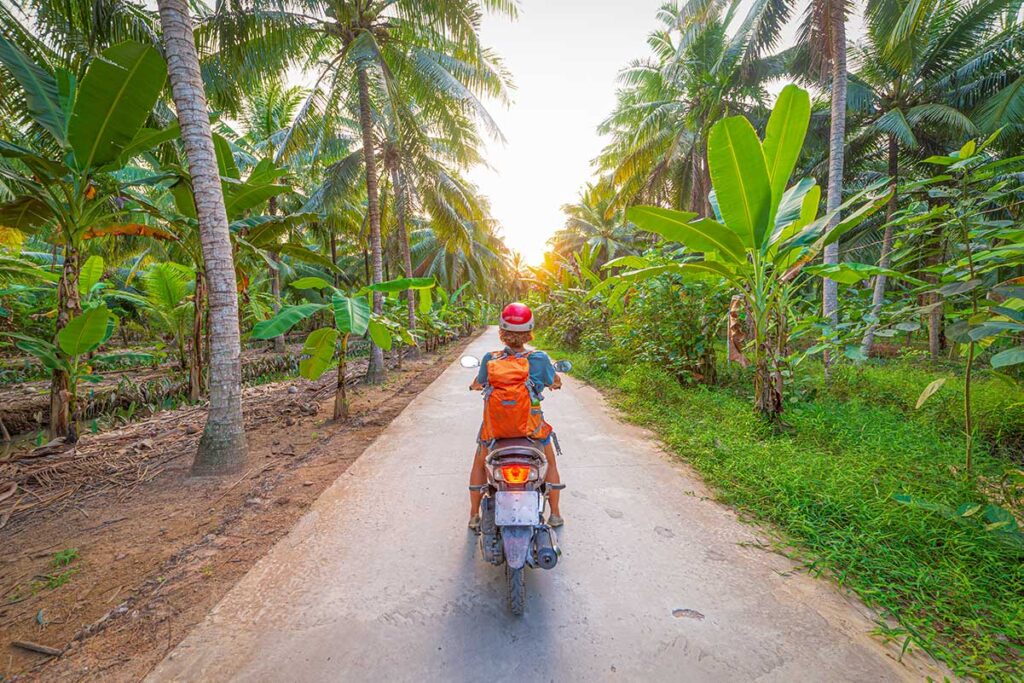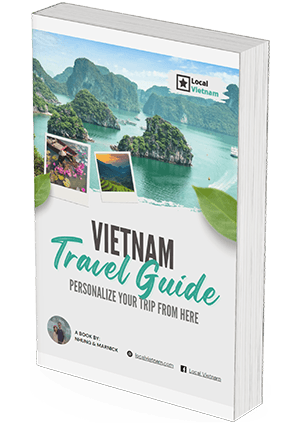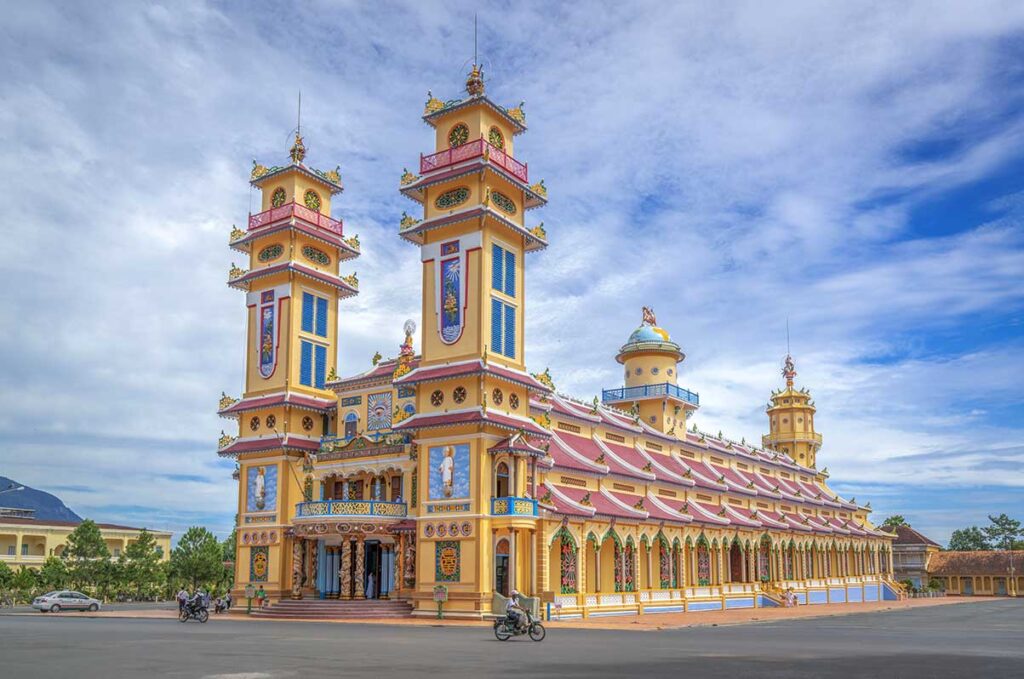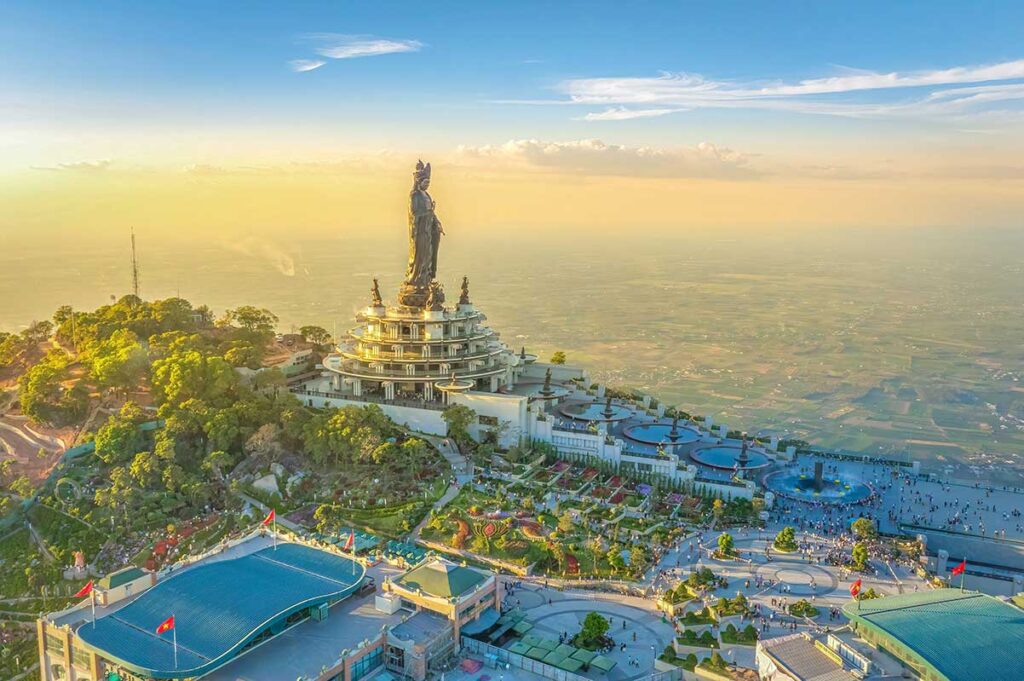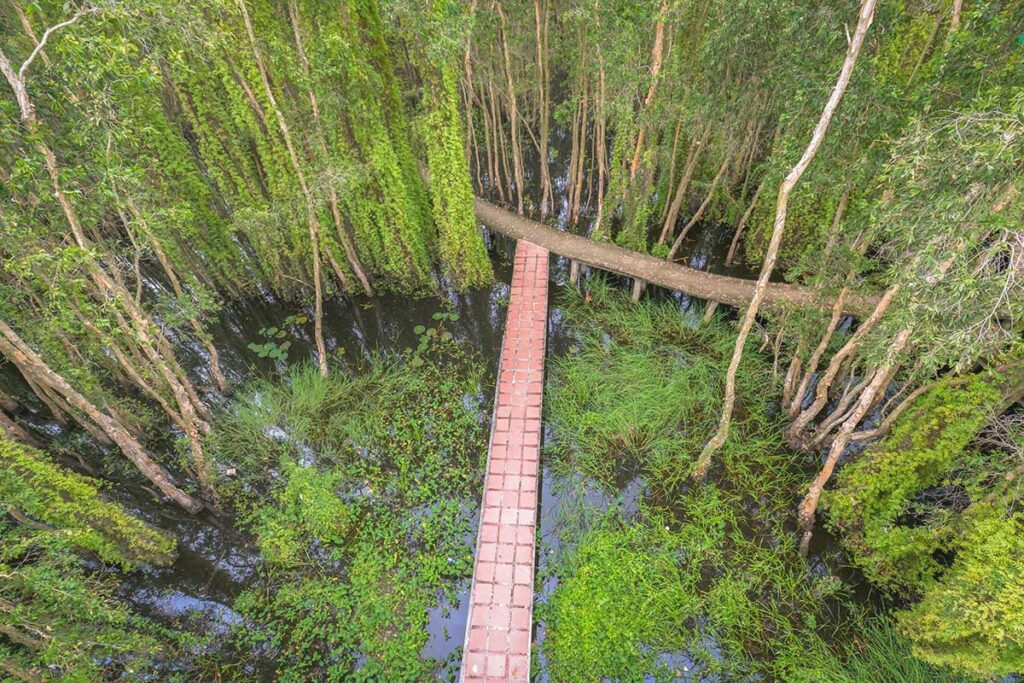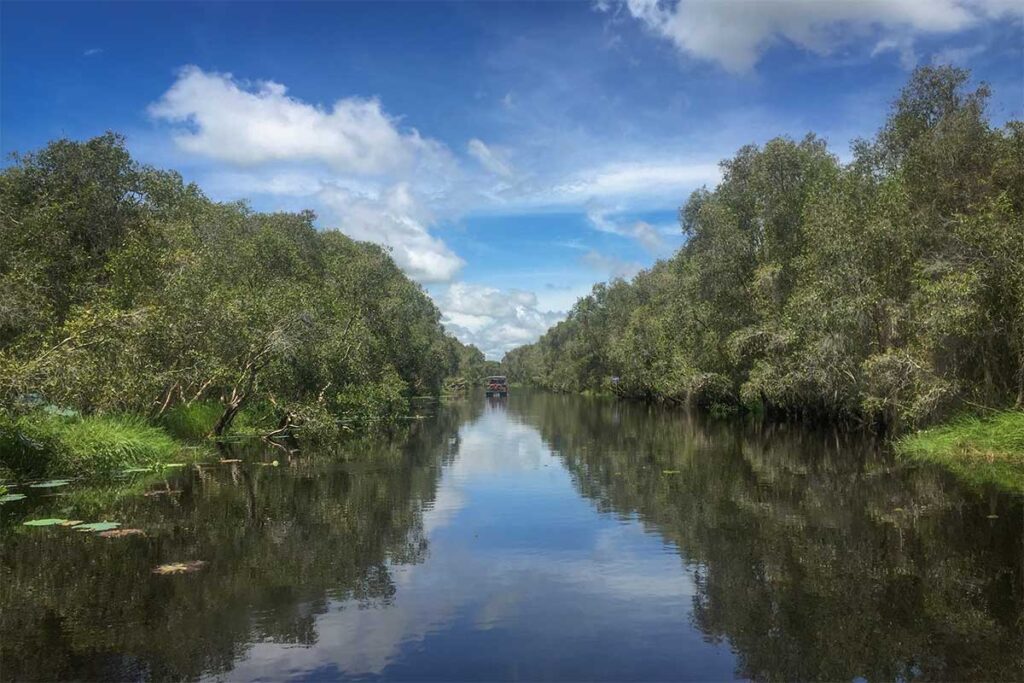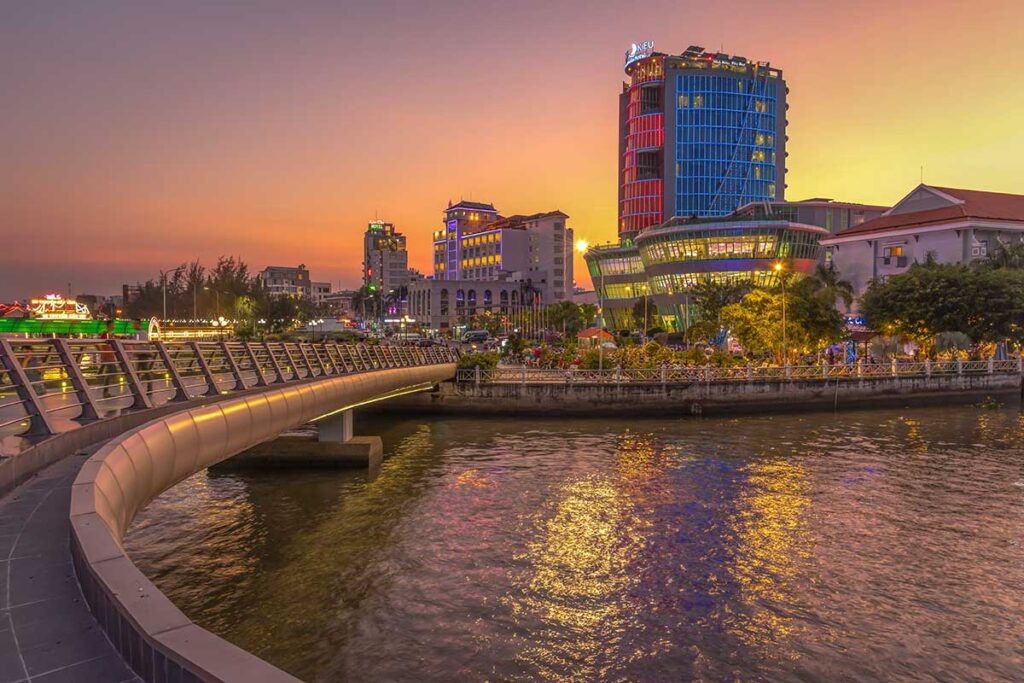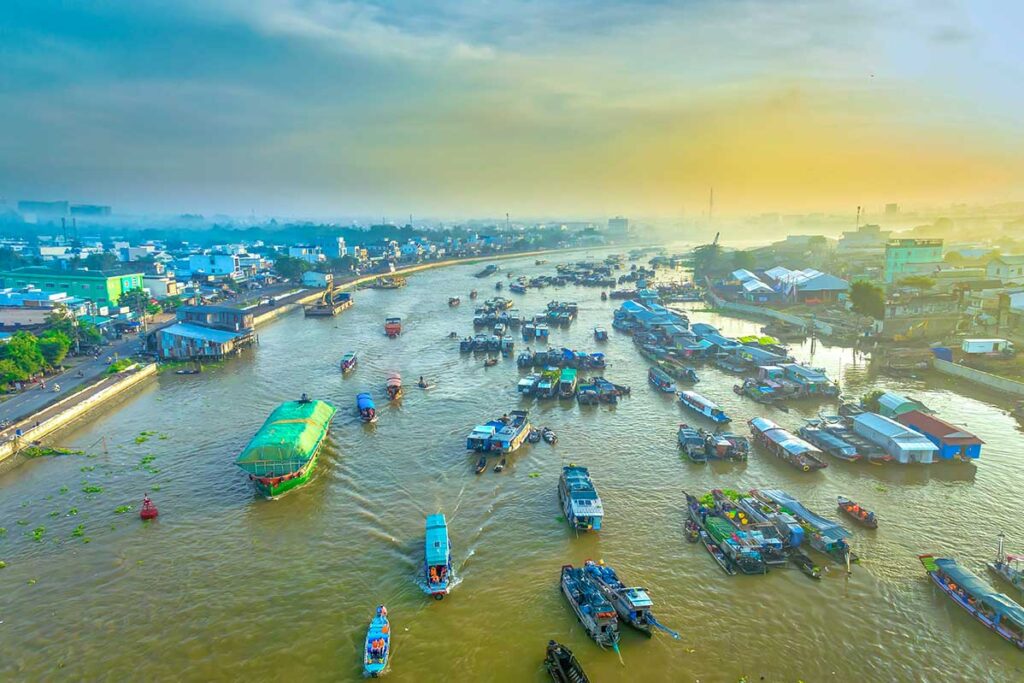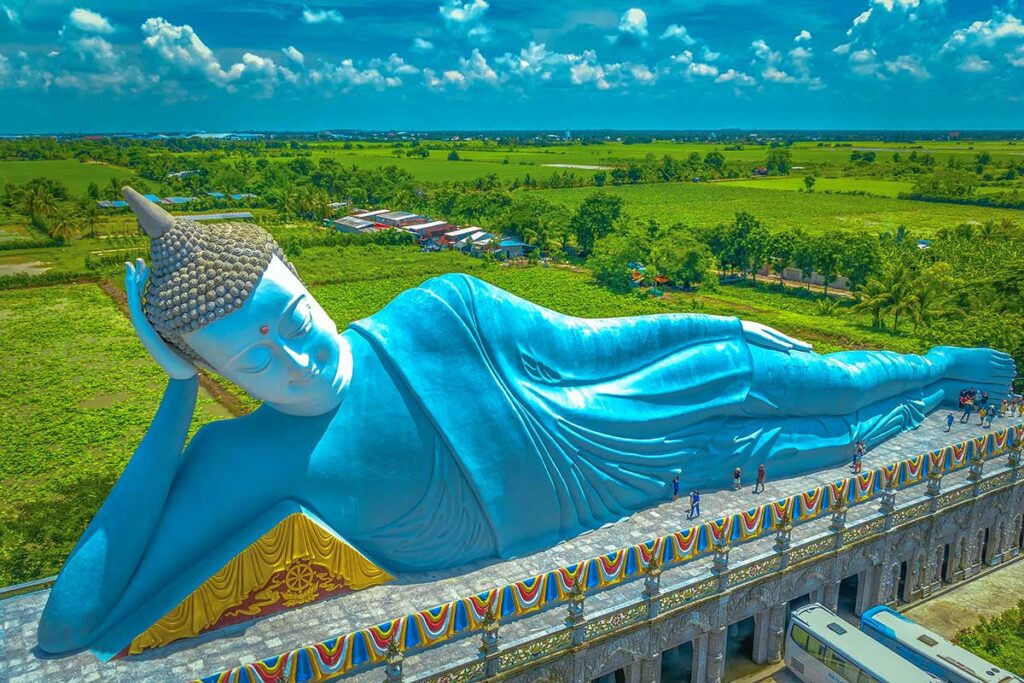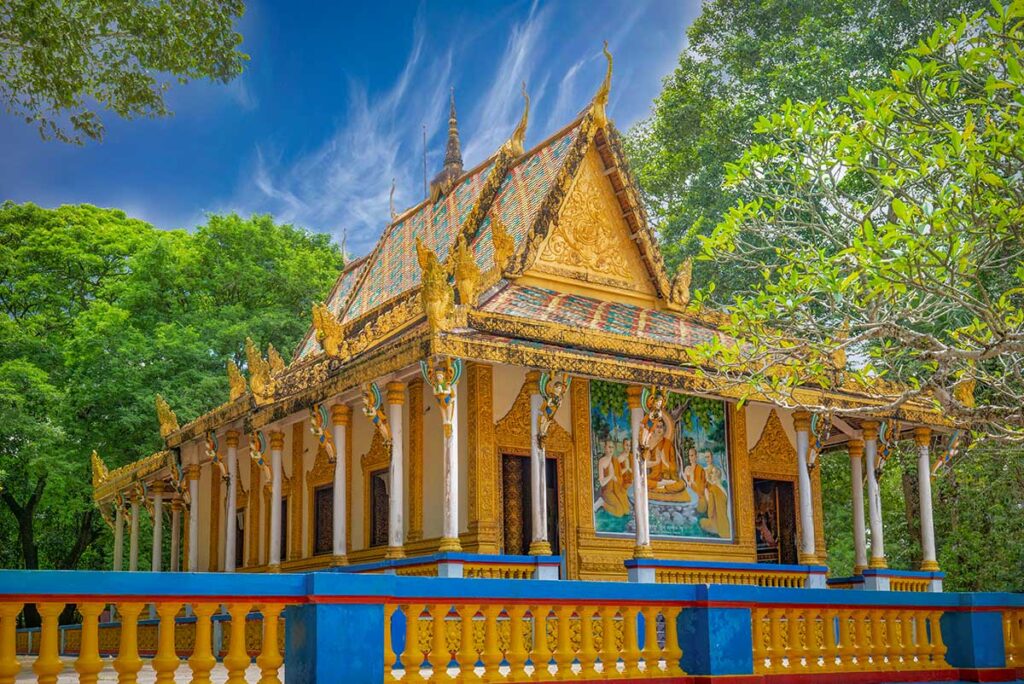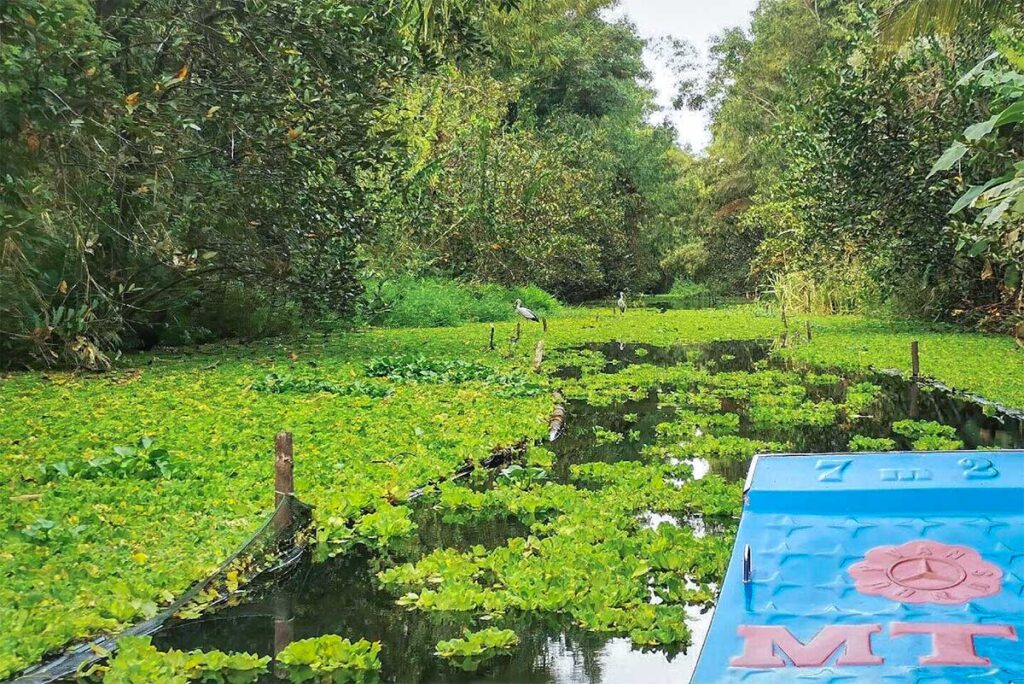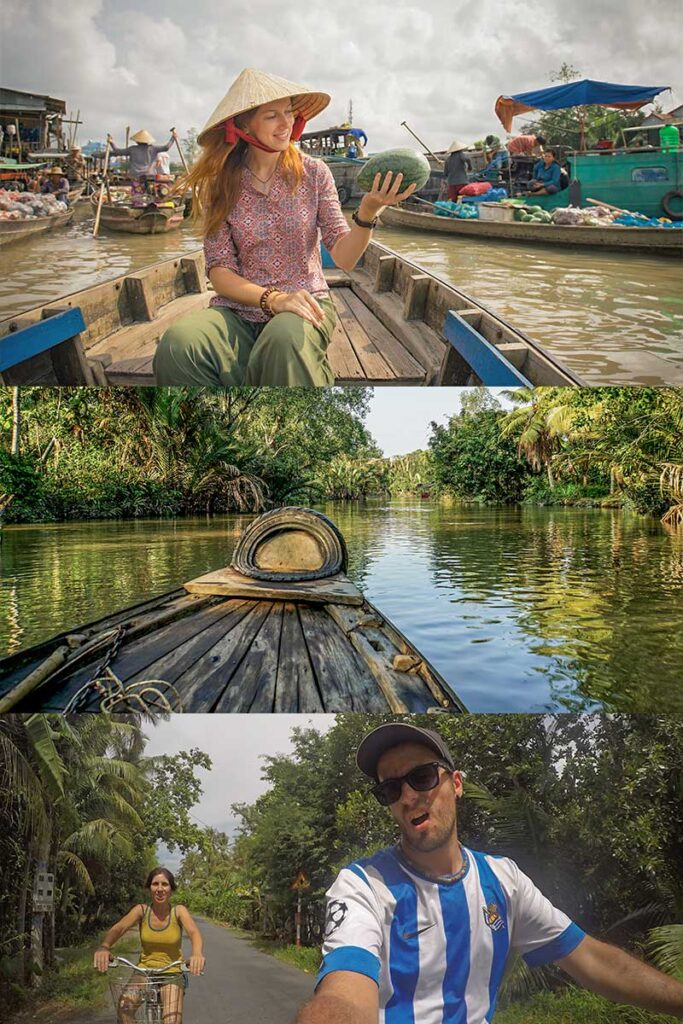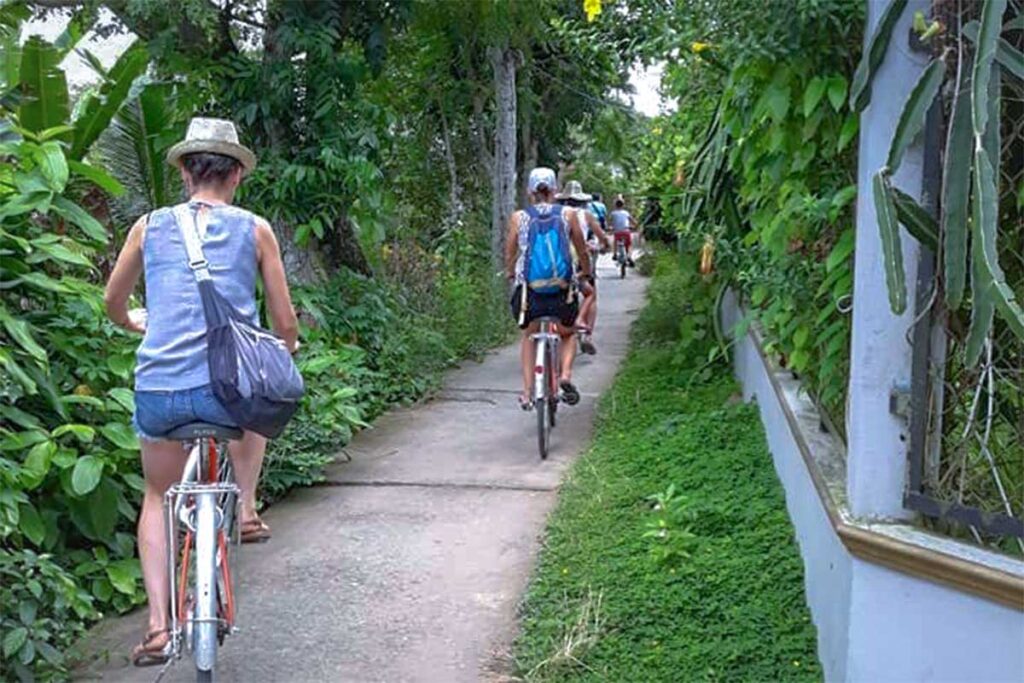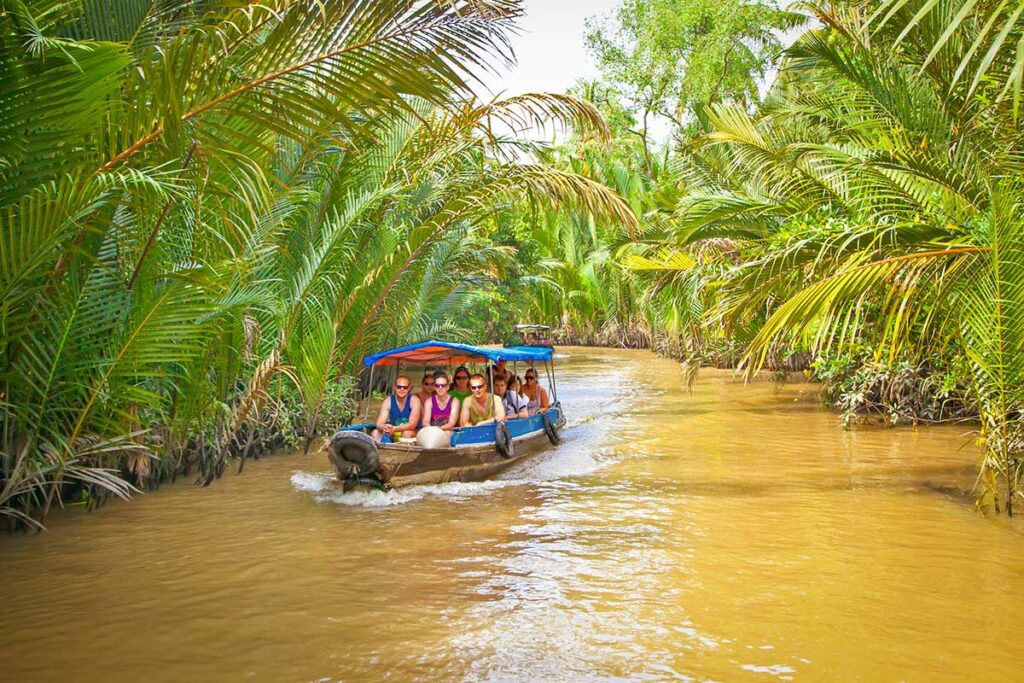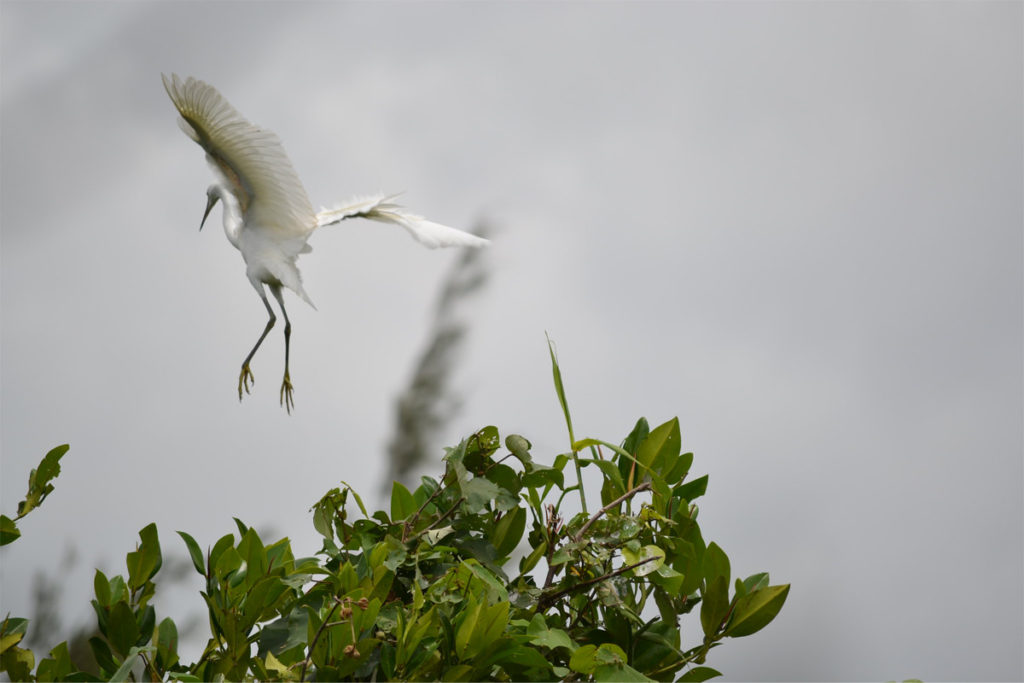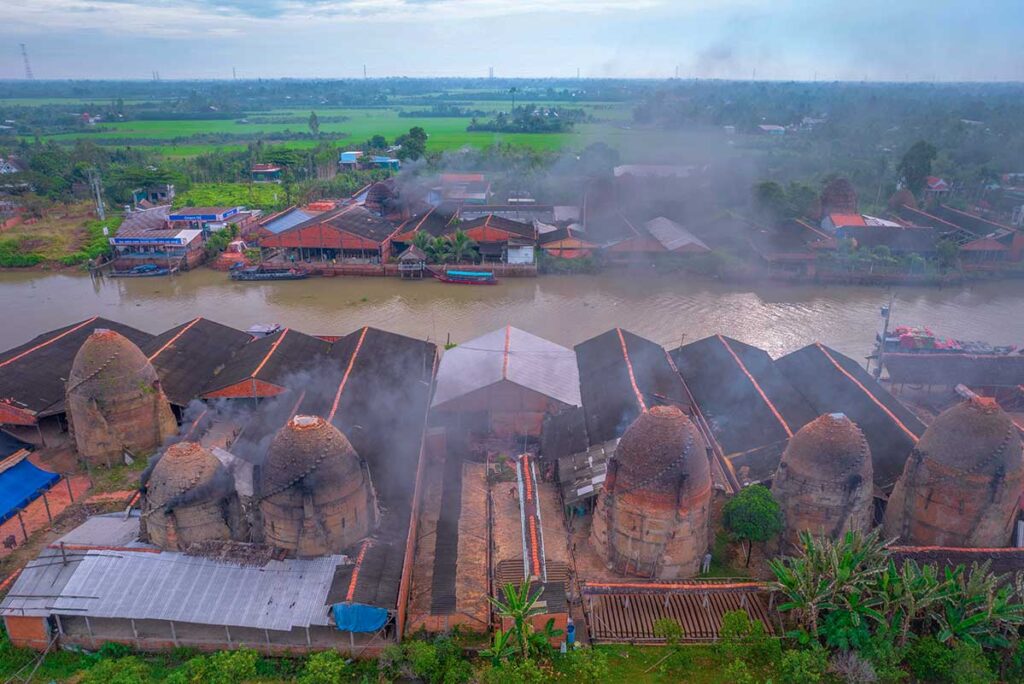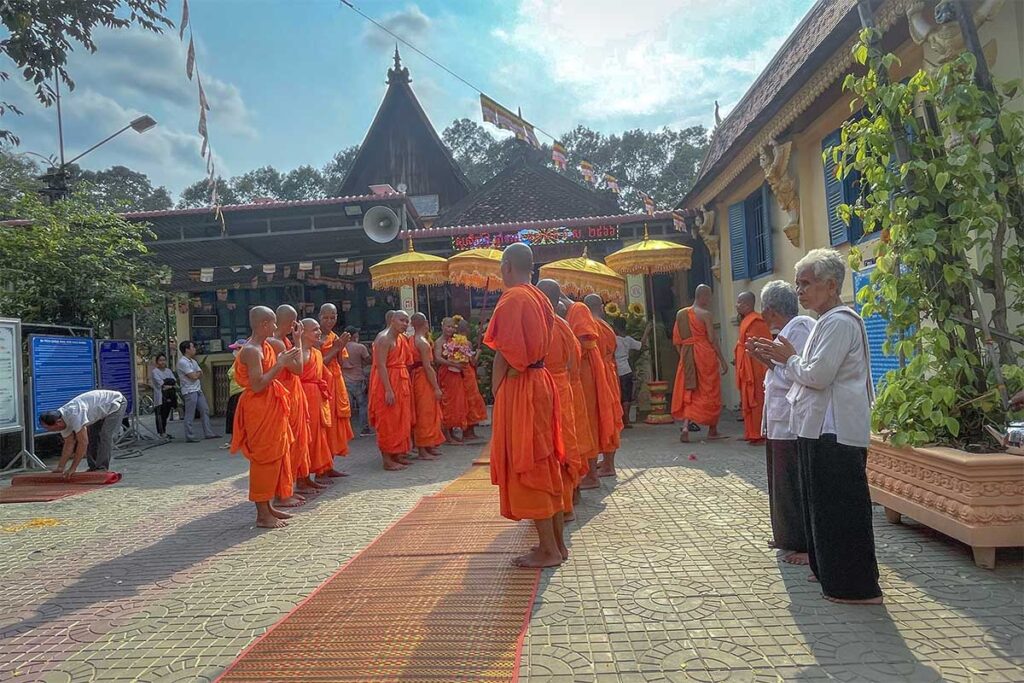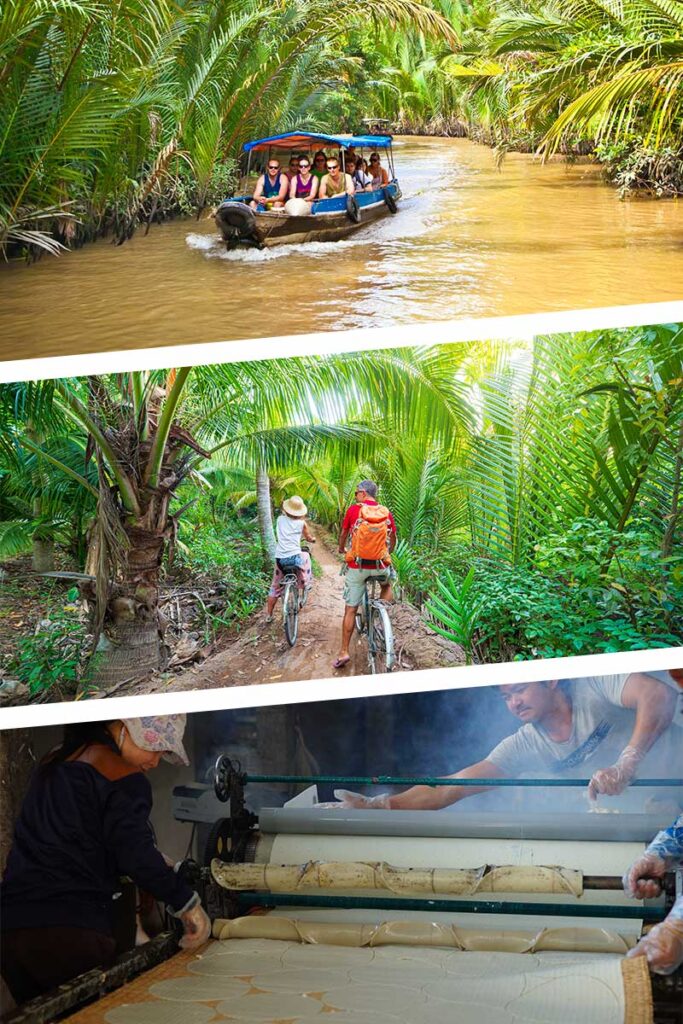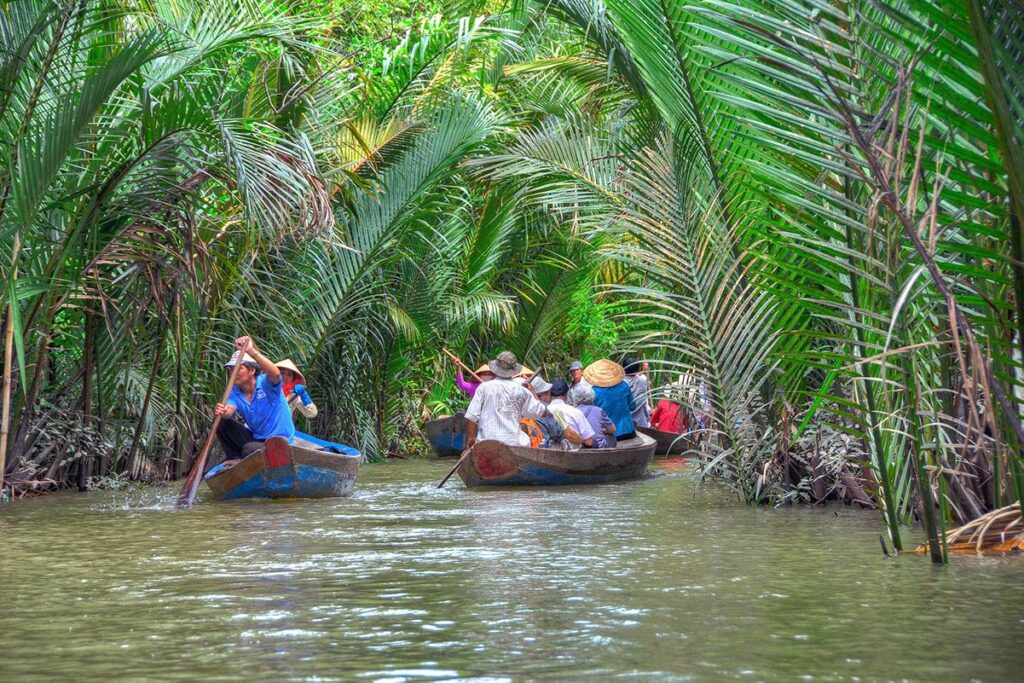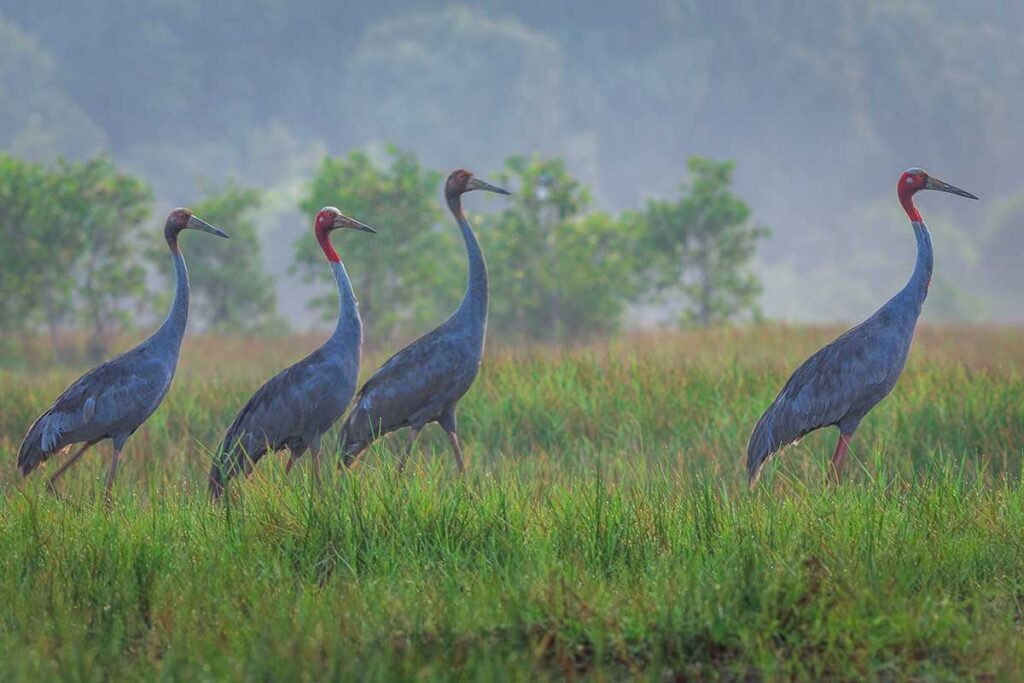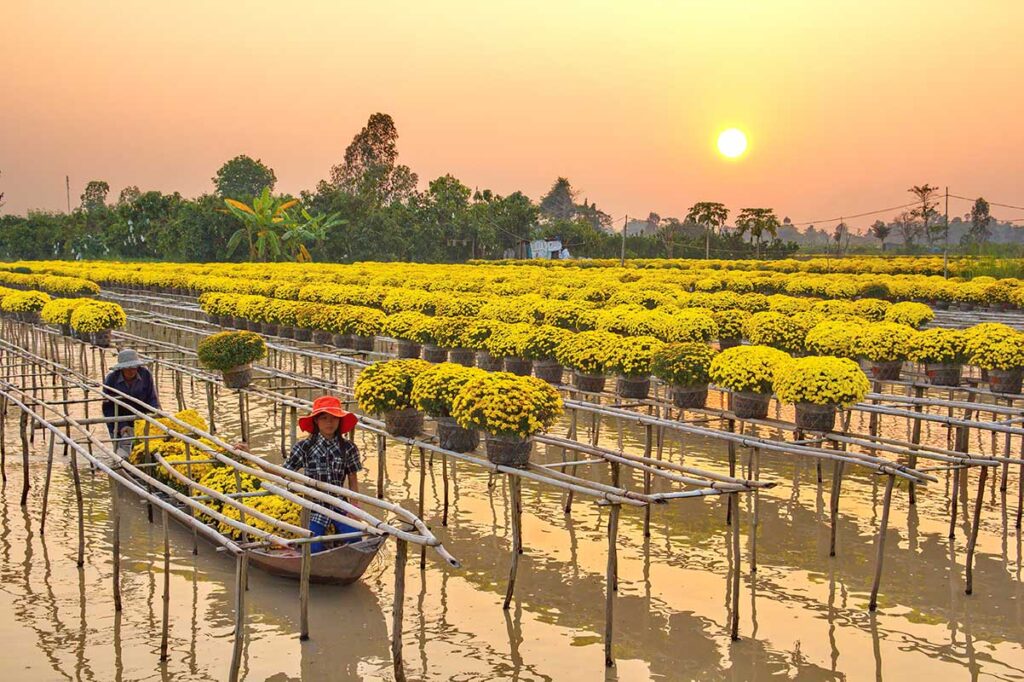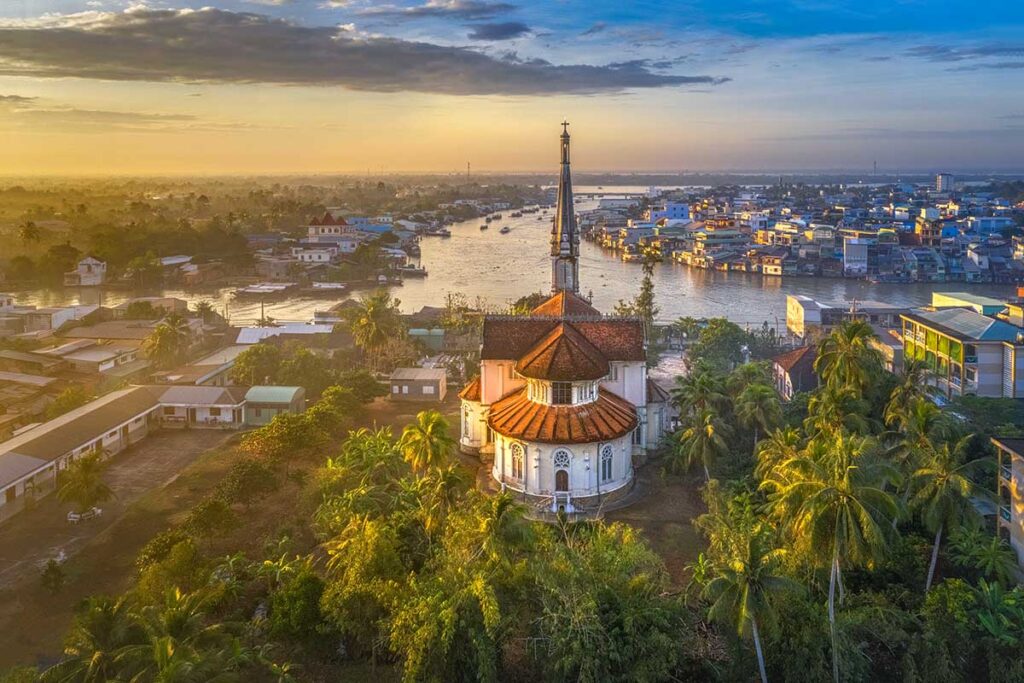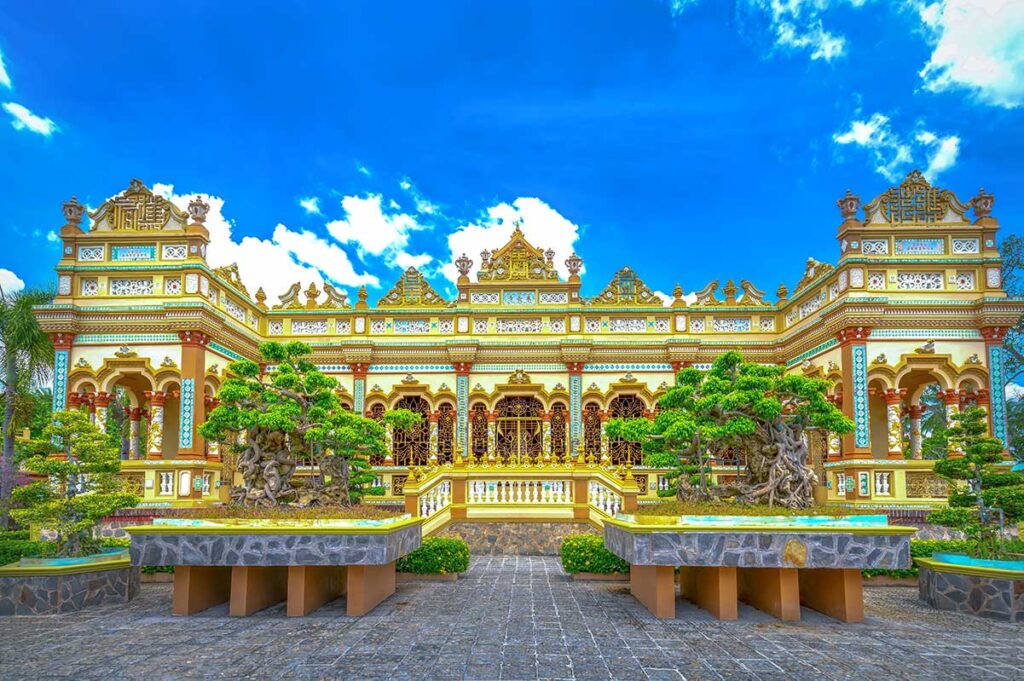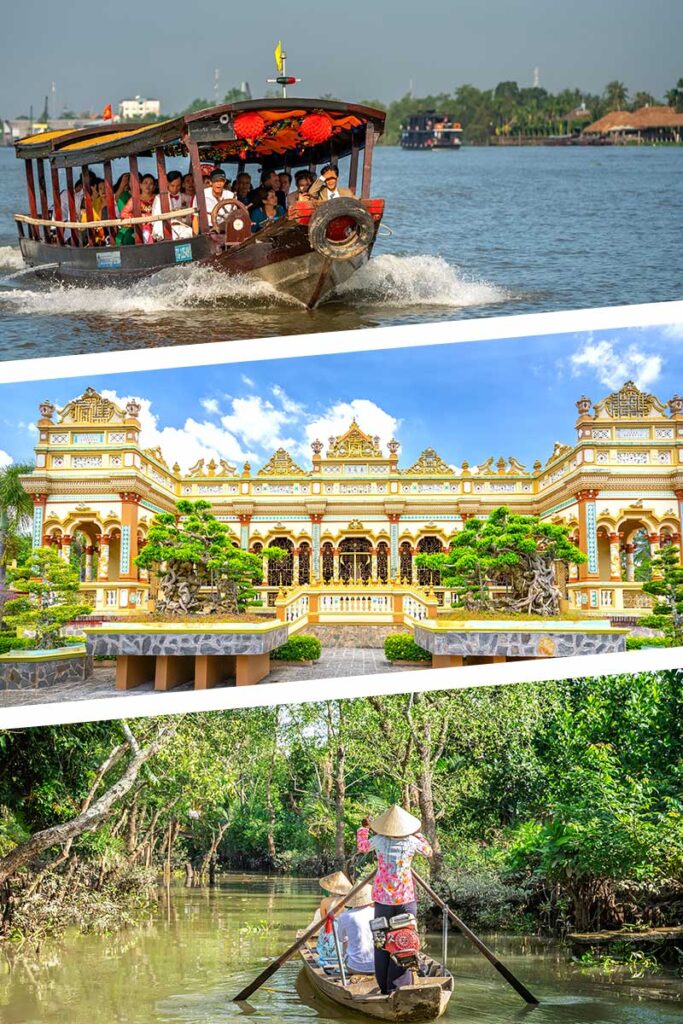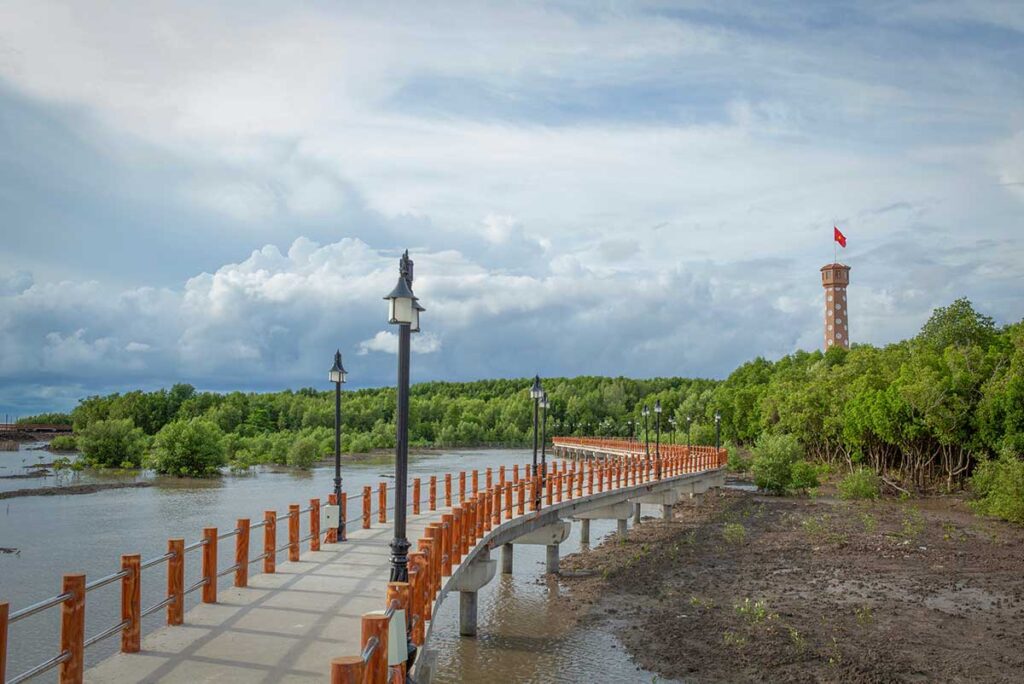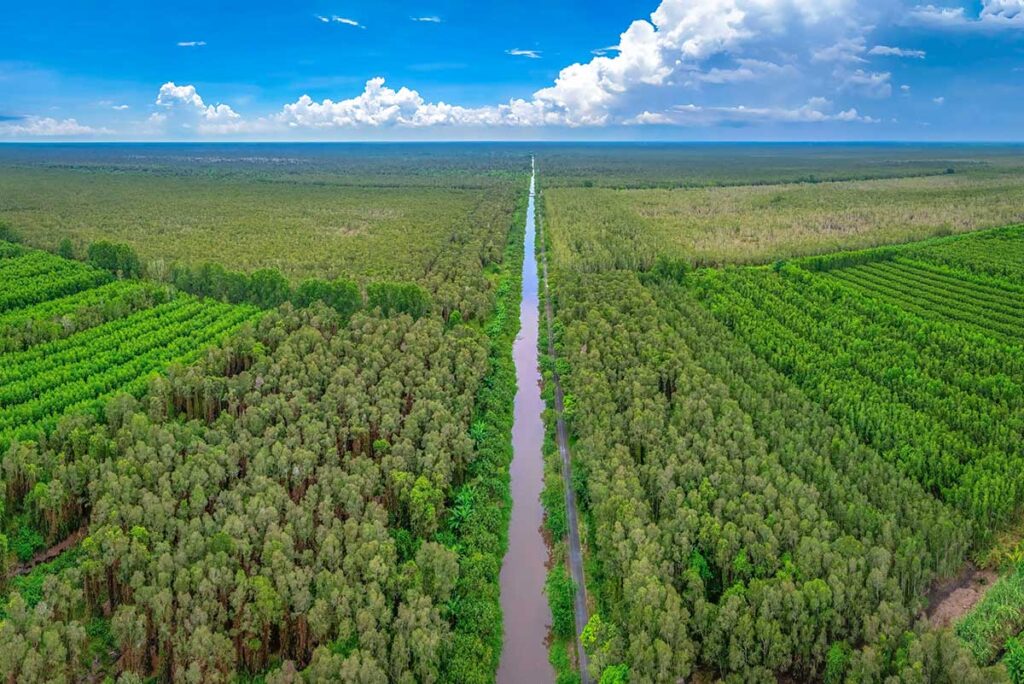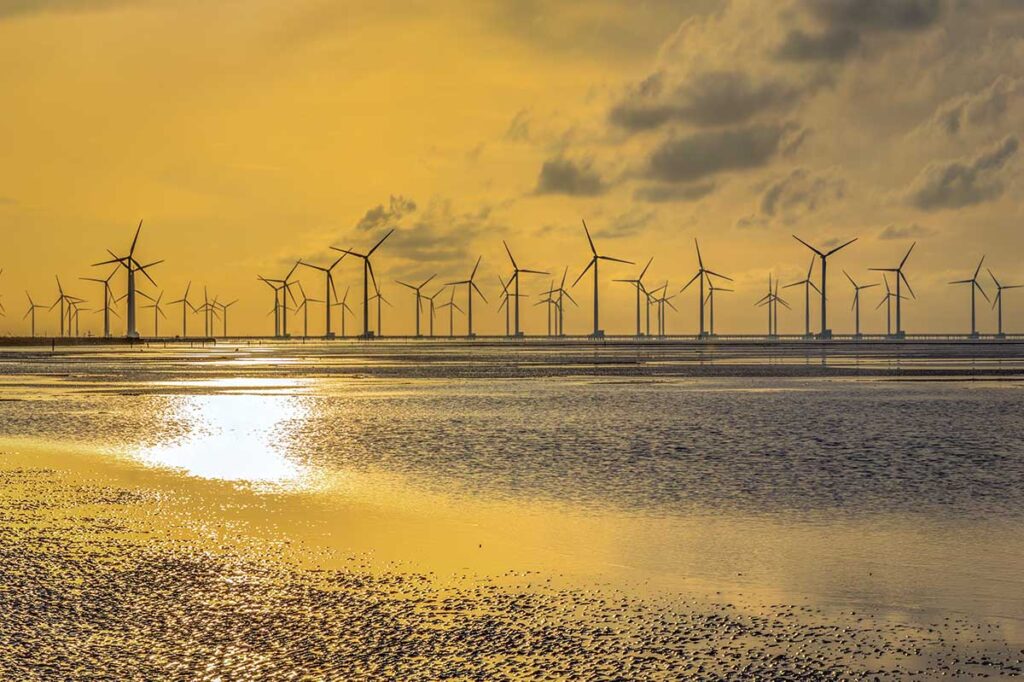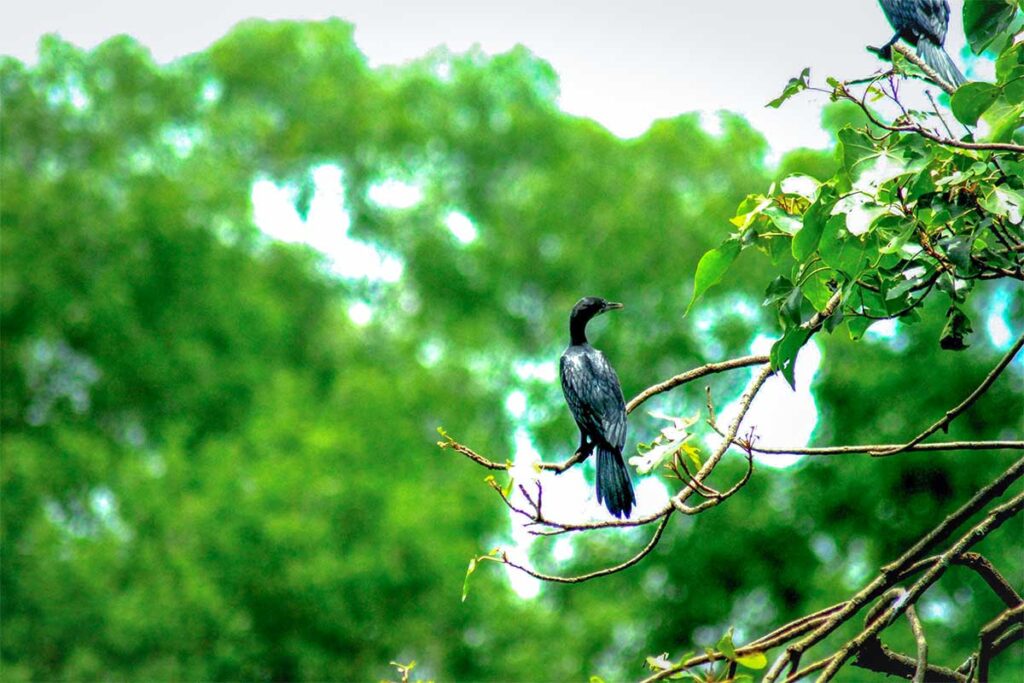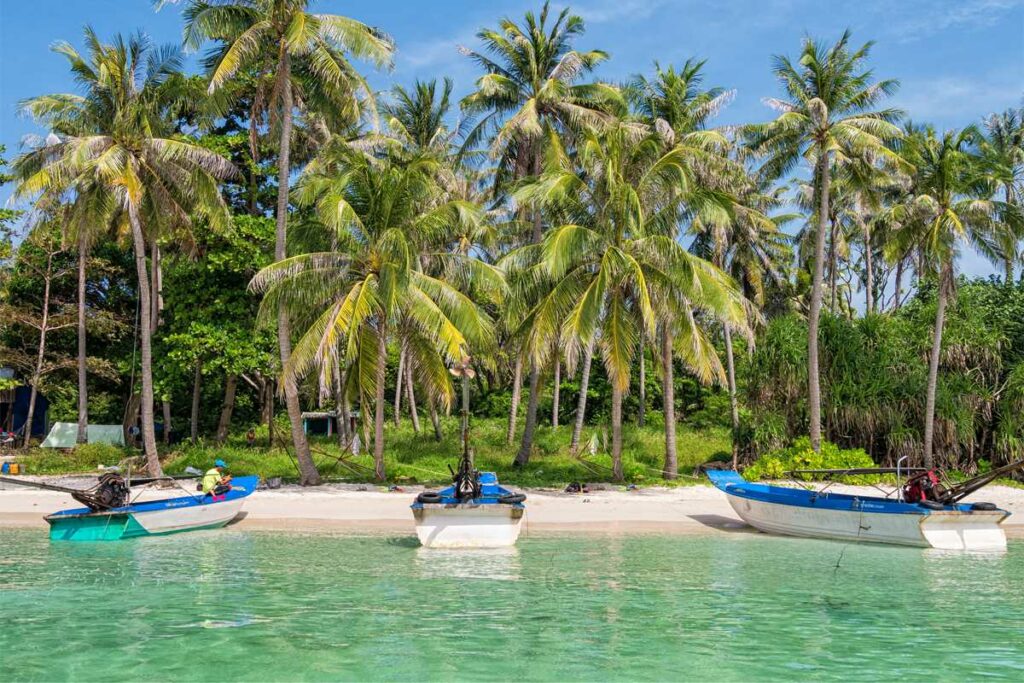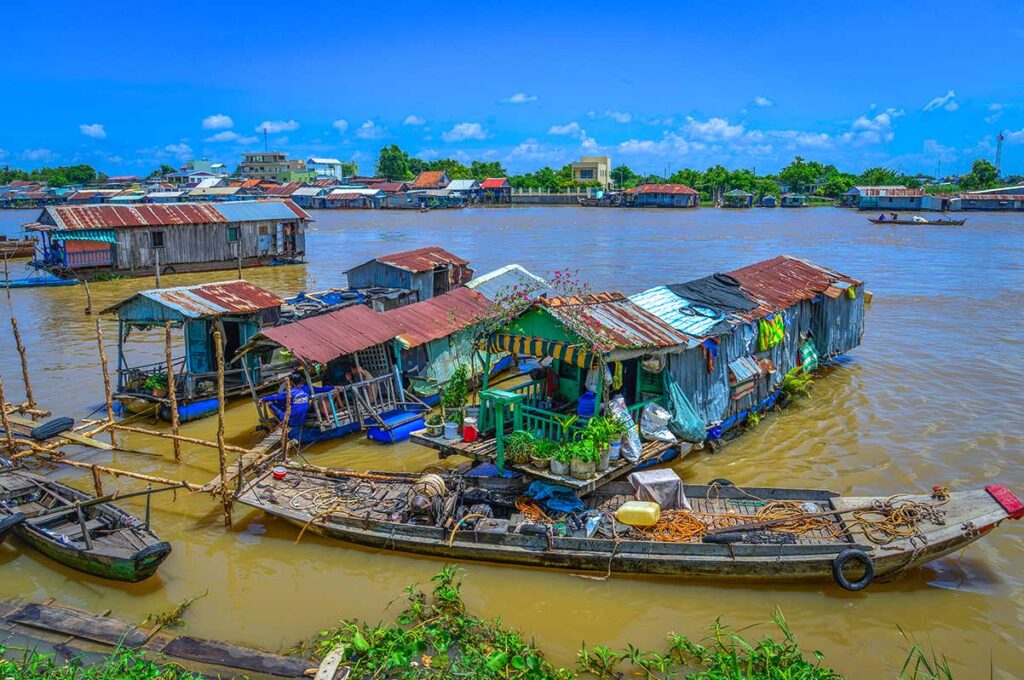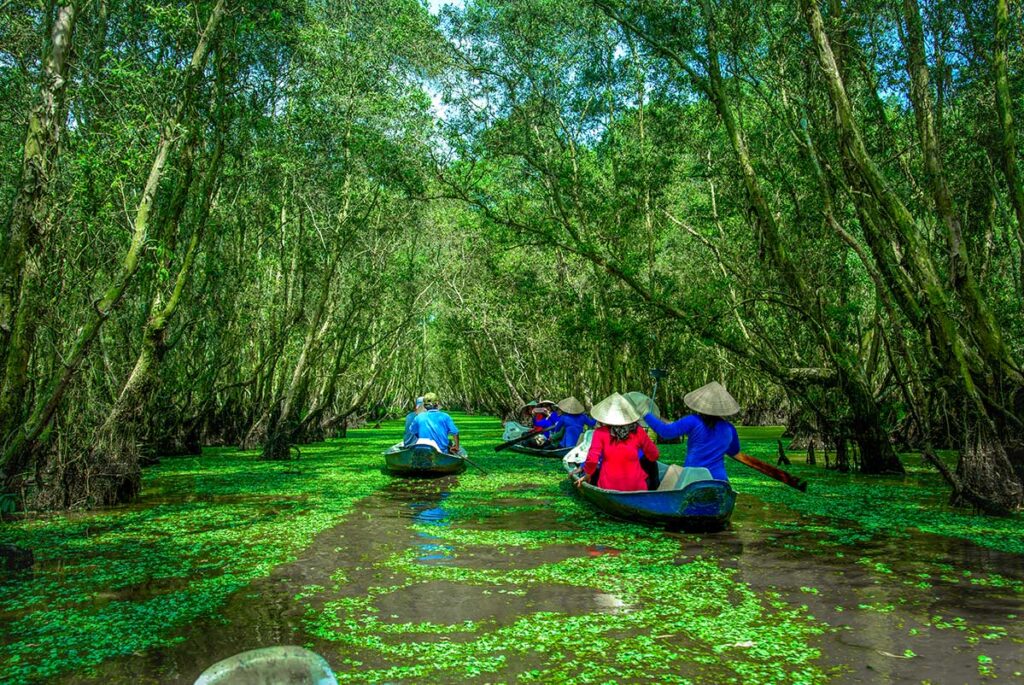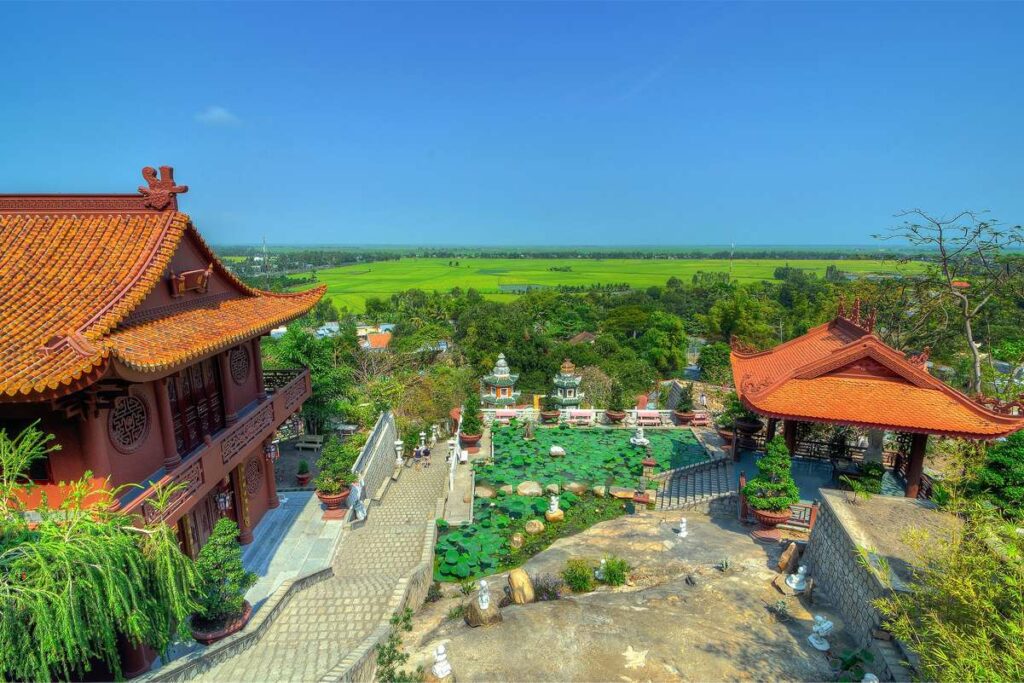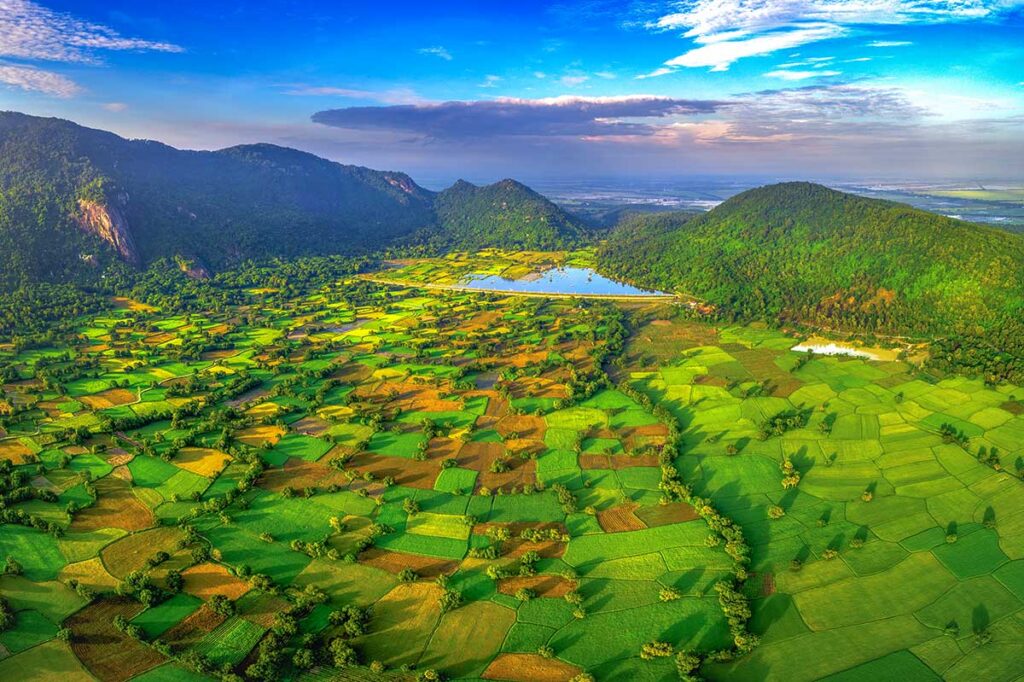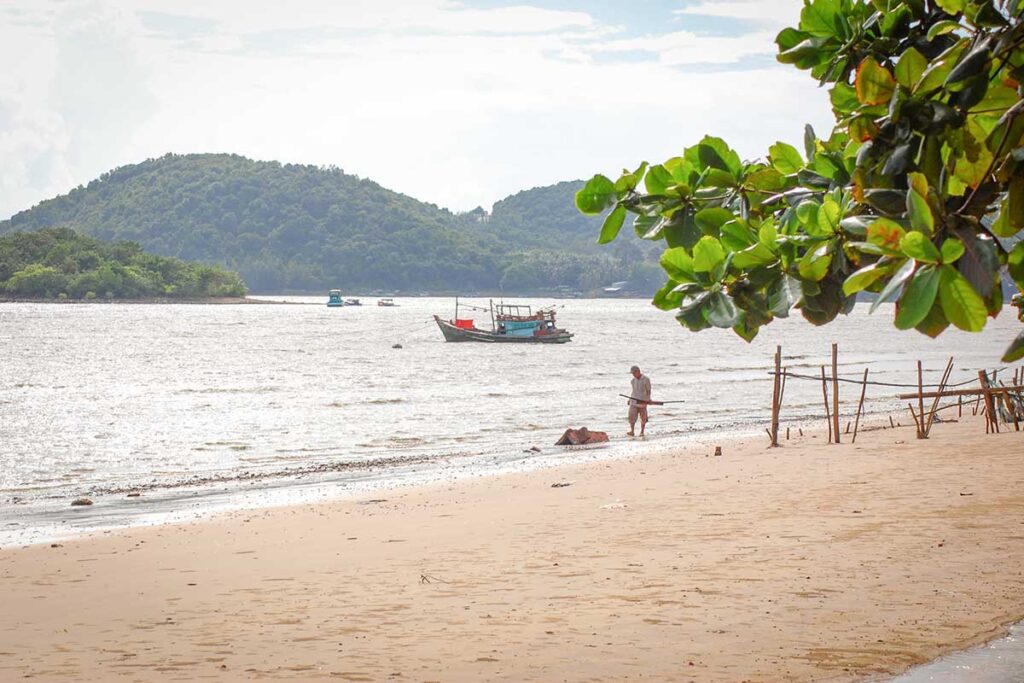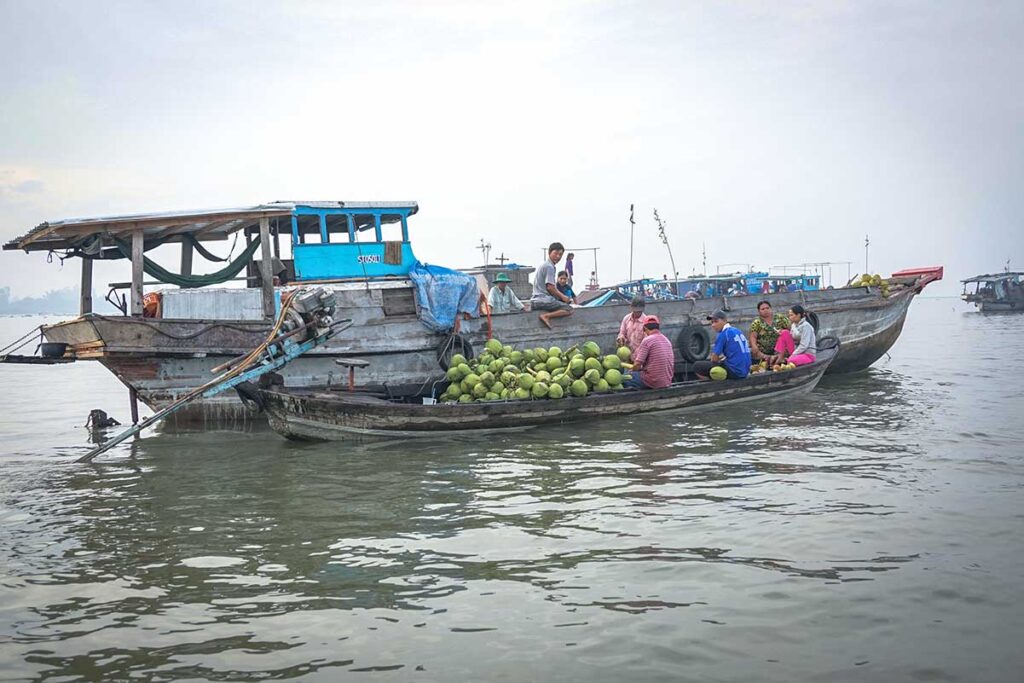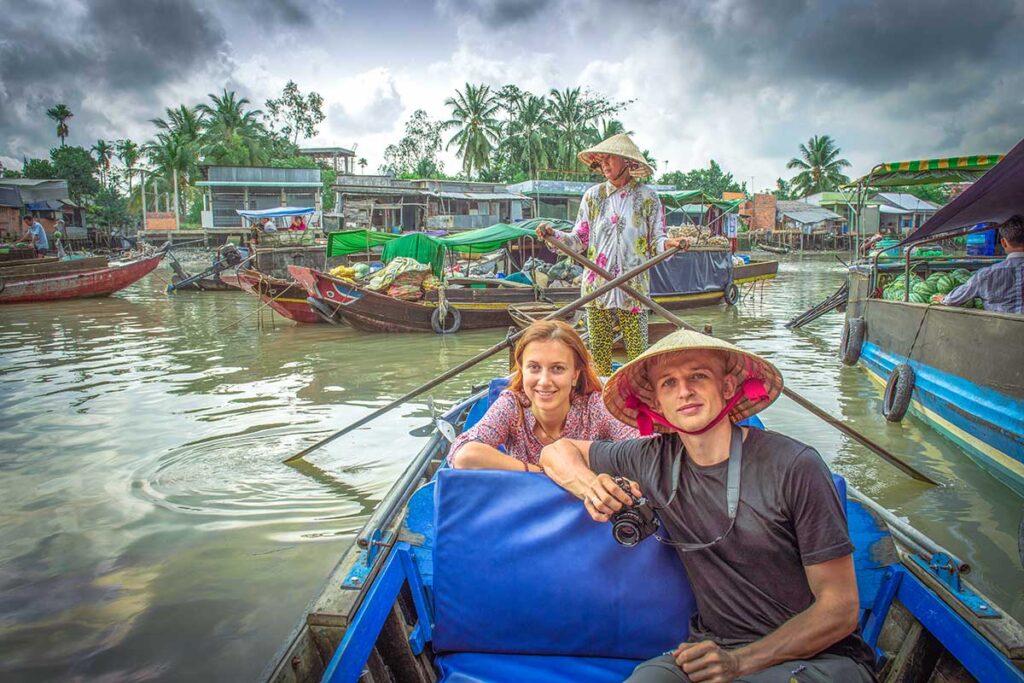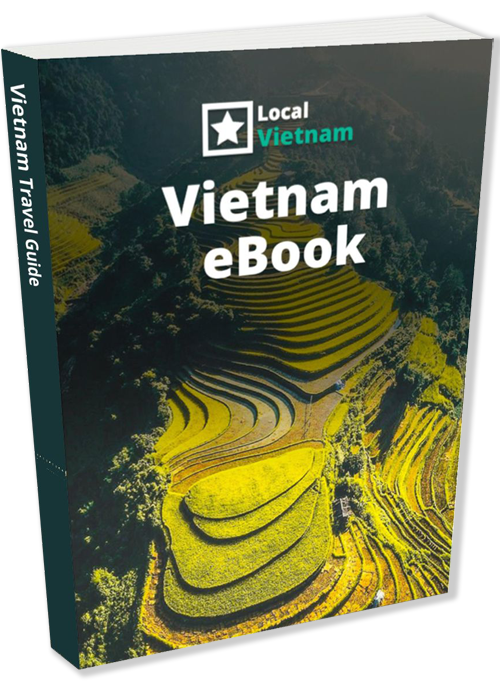Mekong Delta – Vietnam’s River Life Region
Almost everyone has heard of the Mekong Delta, but many travelers don’t fully understand what it is. The Delta is not a single destination, but a vast region the size of a small country like the Netherlands or Switzerland. It covers multiple provinces, each with its own character, and stretches far beyond what you can explore in a single day from Ho Chi Minh City. This scale often surprises visitors who expect one central “Delta town,” but in reality it’s a mosaic of cities, villages, wetlands, and coastlines.
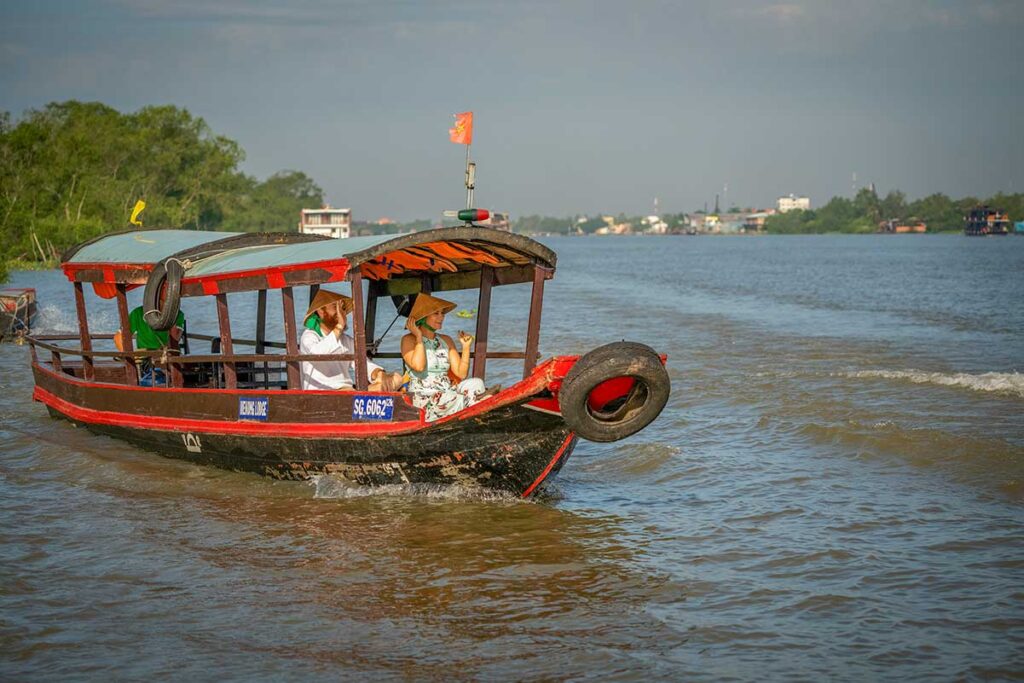
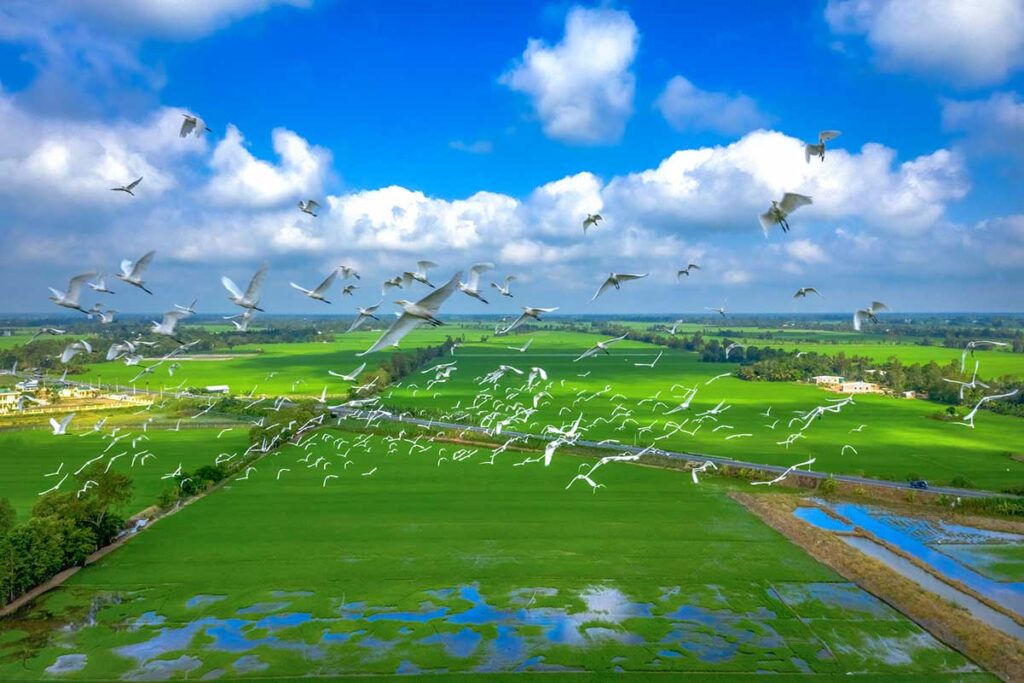
At its heart, the Mekong Delta is about water and fertile land. Branches of the Mekong River spread into countless canals, feeding rice paddies, fruit orchards, and fishing communities. Local life is shaped by these waterways—boats replace cars, markets float on rivers, and farms thrive on rich soil. Understanding this helps put the best things to do in the Mekong Delta into perspective: boat rides, cycling trips, floating markets, and homestays are not just activities for visitors, but everyday life for the people who call the Delta home.
Best things to do in the Mekong Delta
When people ask about the best things to do in the Mekong Delta, the answers are not just about ticking off sights, but about experiences that show what life here is really like. This region is all about water, fertile land, and local communities. Not every activity can be found everywhere, so if you first choose which experiences interest you most, it becomes much easier to decide where to go in the Mekong Delta.
1. Take boat rides & sampan trips through canals
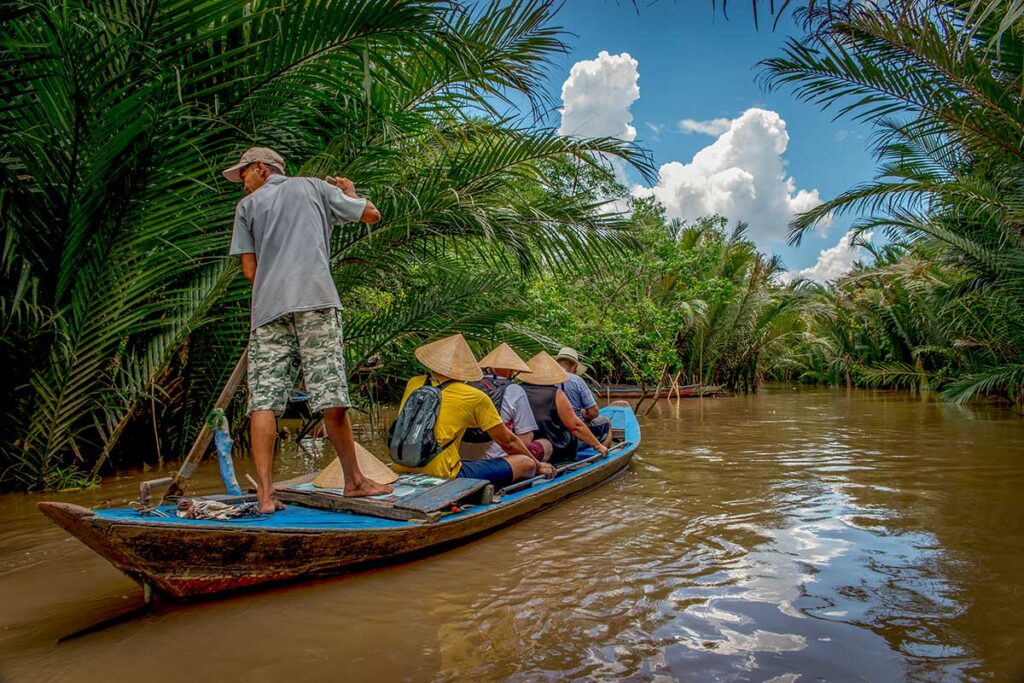
One of the best activities in the Mekong Delta is seeing the region from the water. Small sampan boats or larger river boats let you glide through coconut-lined canals and riverside villages. It’s slow travel at its best, giving you a close look at daily life along the waterways.
2. Cycle along country roads and villages
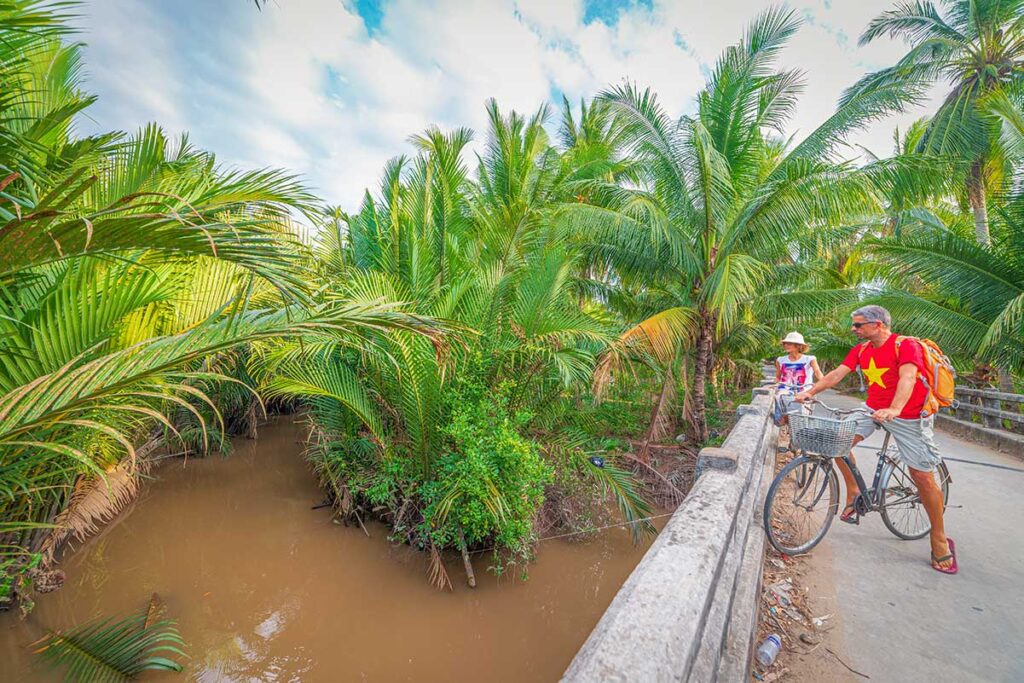
Cycling in the Mekong Delta is a relaxed way to explore, with quiet village paths, rice fields, and fruit orchards all around. Bikes are easy to rent, and some areas also allow scooters if you prefer motorized transport. Ferry crossings add a bit of adventure, as you hop from one island or riverbank to the next.
3. Visit floating markets
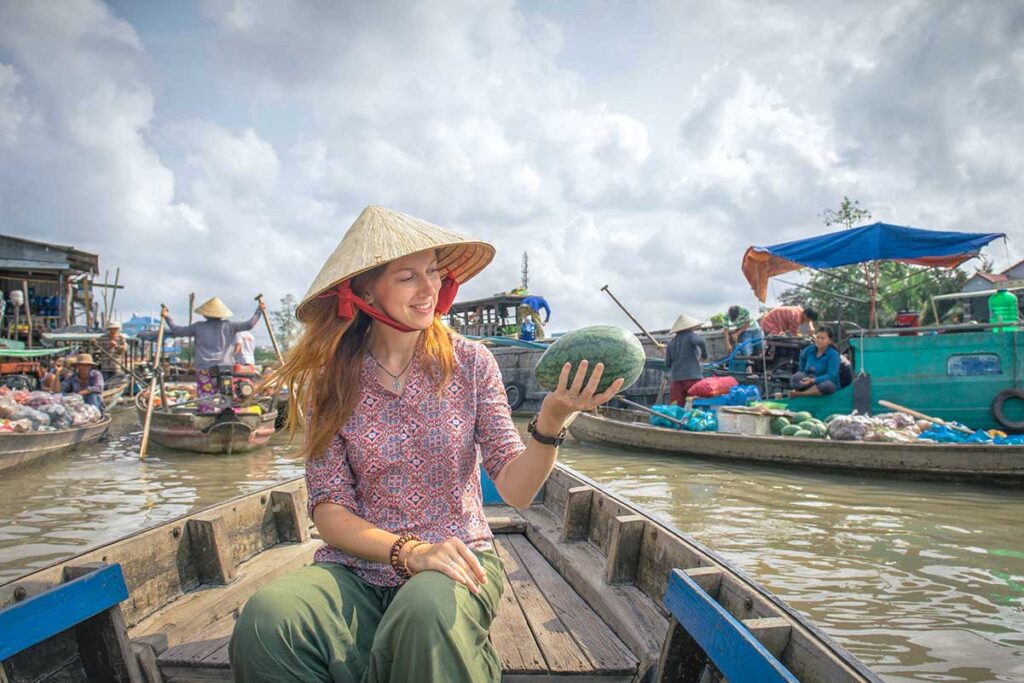
No list of Mekong Delta floating markets would be complete without mentioning them, but travelers should know they are not what they once were. Some have disappeared, others are small, and a few are more focused on tourists than trade. Still, visiting in the early morning offers a glimpse of river commerce and colorful boats loaded with produce.
4. Visit local markets and craft villages
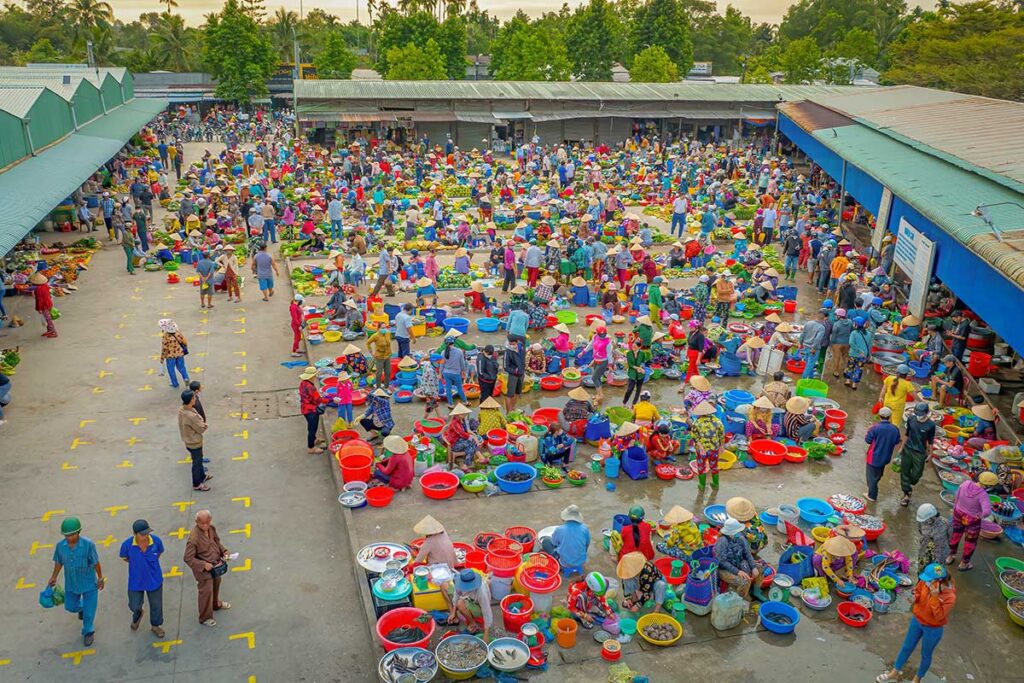
Another of the best things to do in the Mekong Delta is to explore the smaller land markets and villages where crafts are still made. These can be mat weaving, pottery, or brick-making communities, often tucked away off the main routes. The atmosphere is simple but authentic, showing you rural life beyond the main towns.
5. Stay overnight in a family-run homestay
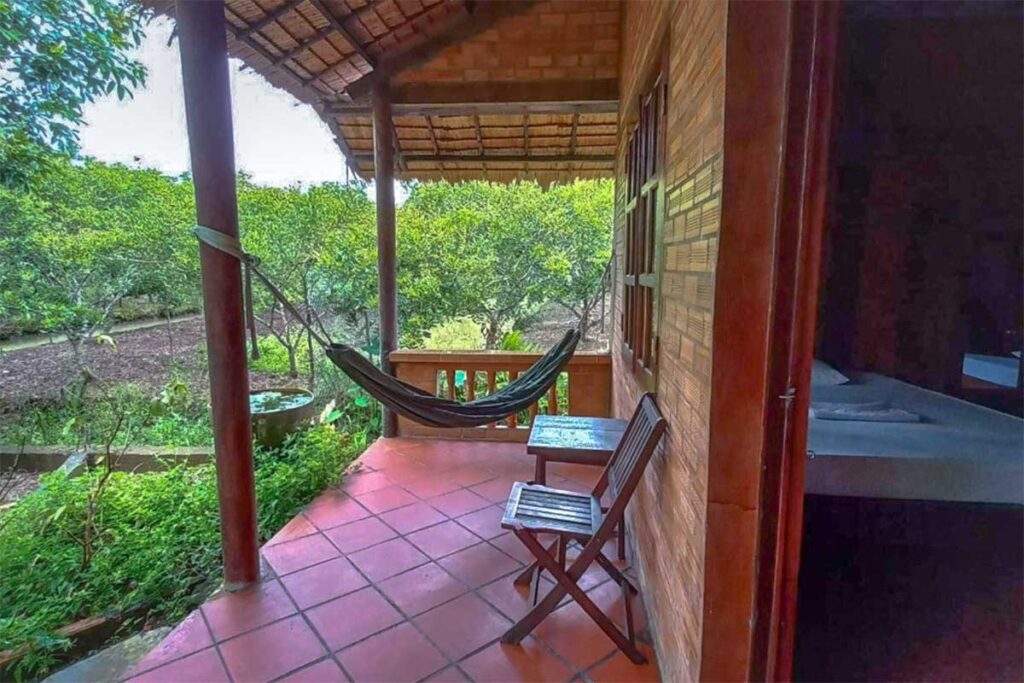
Homestays in the Mekong Delta let you experience local hospitality rather than a standard hotel. Rooms are usually simple but welcoming, and meals often use ingredients straight from the garden. Falling asleep to the sounds of the river and waking up with a family breakfast can be a highlight of the trip.
6. Go bird watching in national reserves
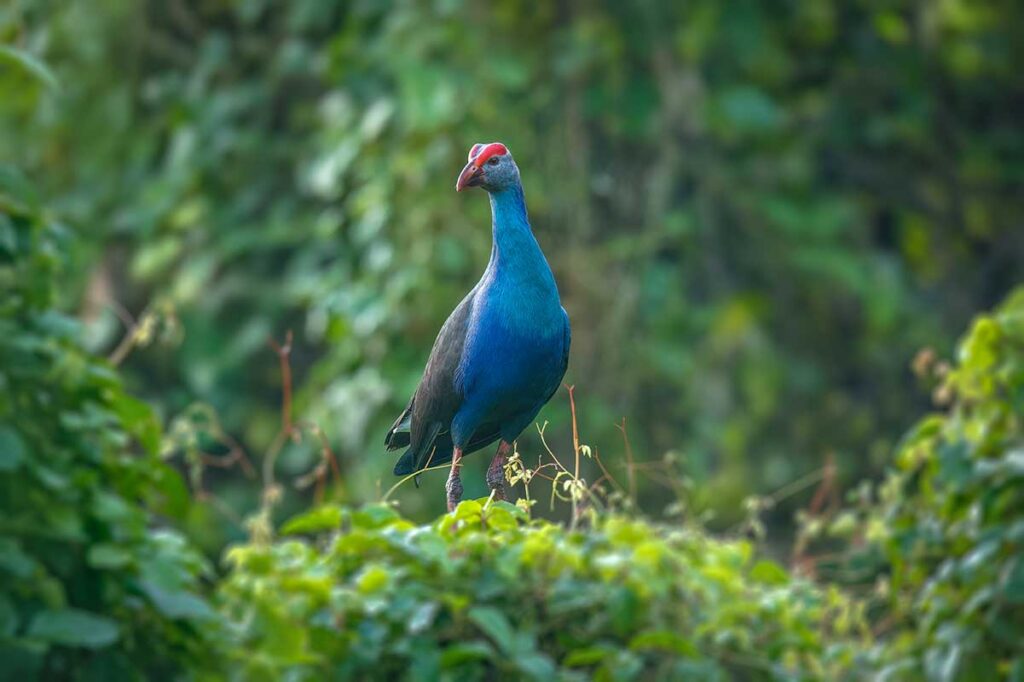
If you enjoy nature, bird watching in the Mekong Delta is rewarding in wetlands and protected areas. Places like Tram Chim or U Minh Ha are home to rare species, though sightings can depend on the season. Even without rare birds, the landscapes of lotus ponds and swamp forests are worth the visit.
7. Discover pagodas and temples on a cultural tour
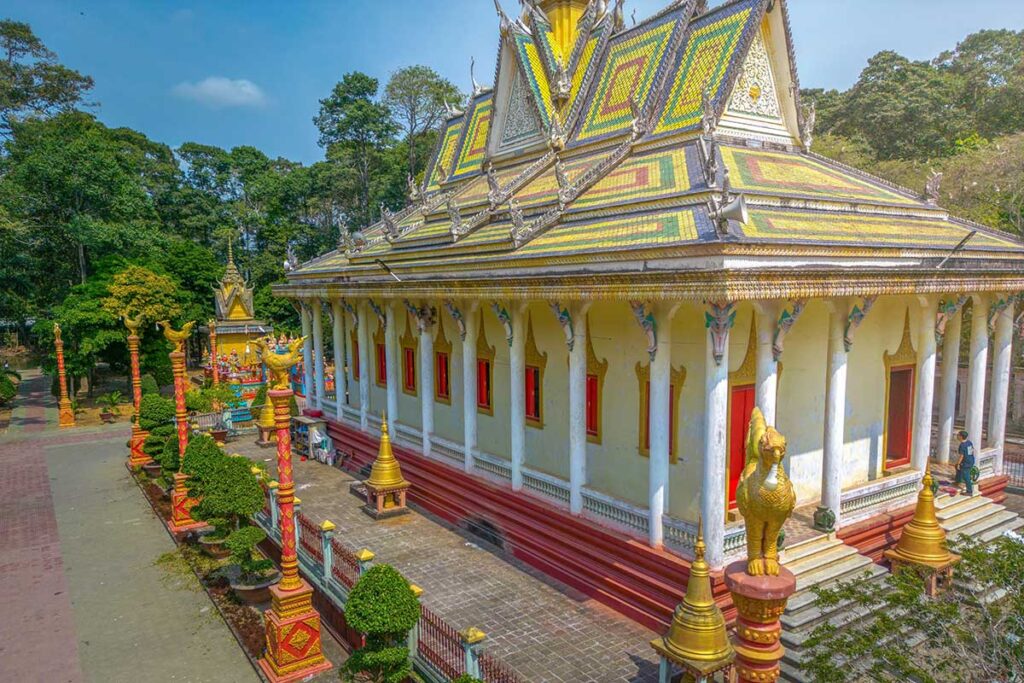
Among the many things to do in the Mekong Delta, exploring its religious sites is an easy way to connect with local culture. The region is home to Khmer pagodas, Chinese temples, and Vietnamese communal houses. Most are active places of worship, so it’s best to visit respectfully and avoid peak prayer times.
8. Paddle by SUP or kayak on quiet waterways
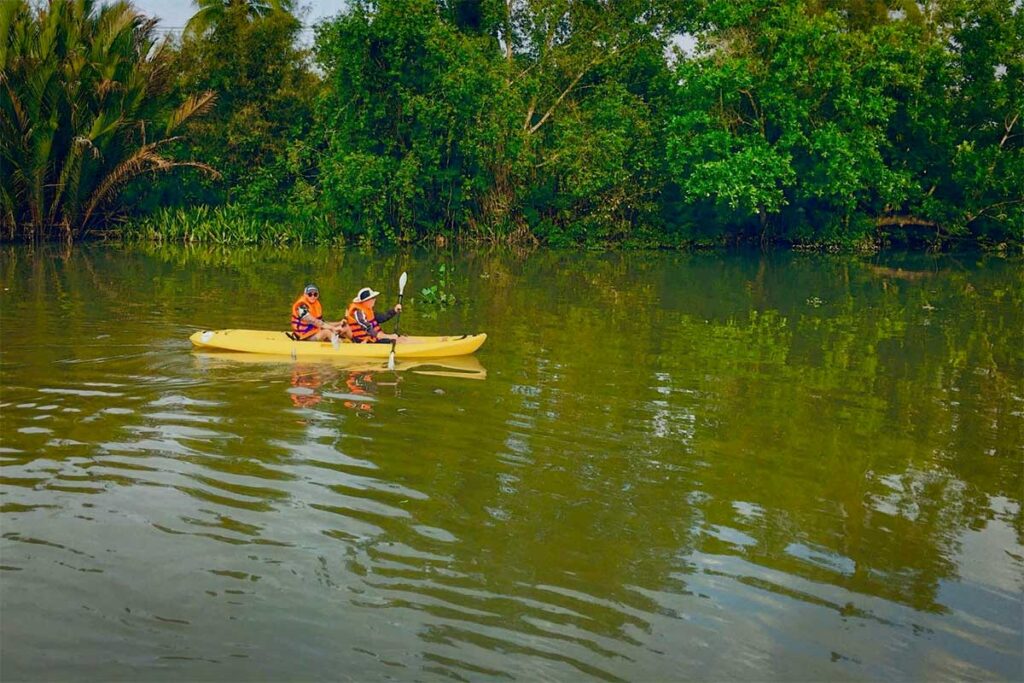
For a more active thing to do in the Mekong Delta, try stand-up paddleboarding (SUP) or kayaking. These are usually available in calmer canals or near eco-lodges. It’s peaceful and lets you get much closer to the water than on a motorboat.
9. Explore tropical islands off the coast
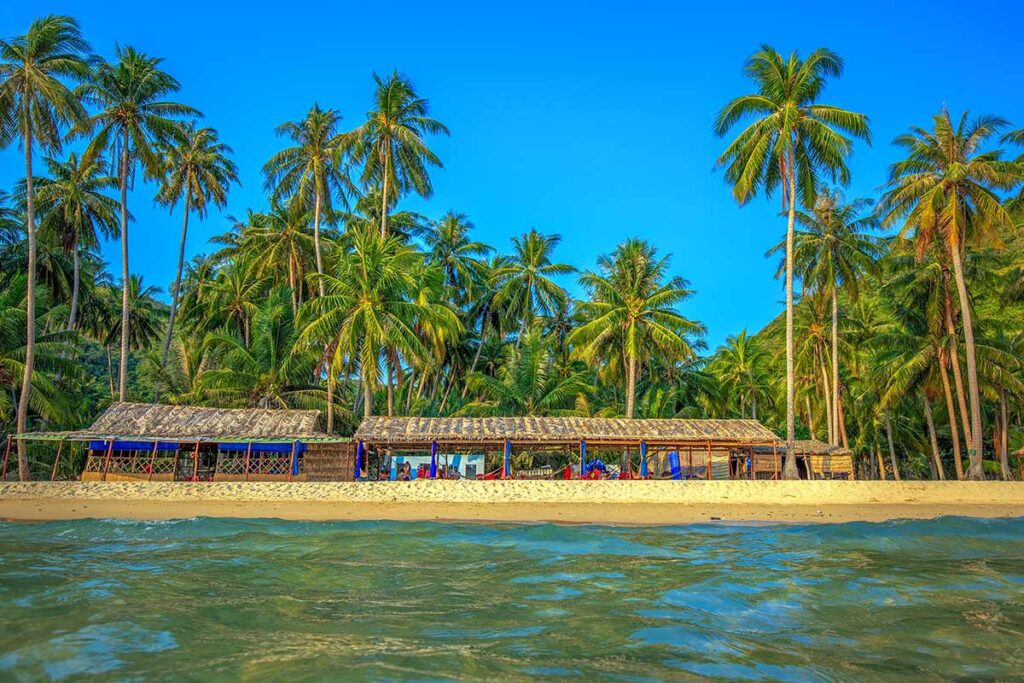
The Mekong Delta is more than just rice fields and rivers; its coastline also hides tropical islands. Places like Phu Quoc or Nam Du offer beaches, snorkeling, and seafood, making them a very different experience from the inland waterways. They can be combined with a Delta trip for travelers who want variety.
10 Join a cooking class or local workshop
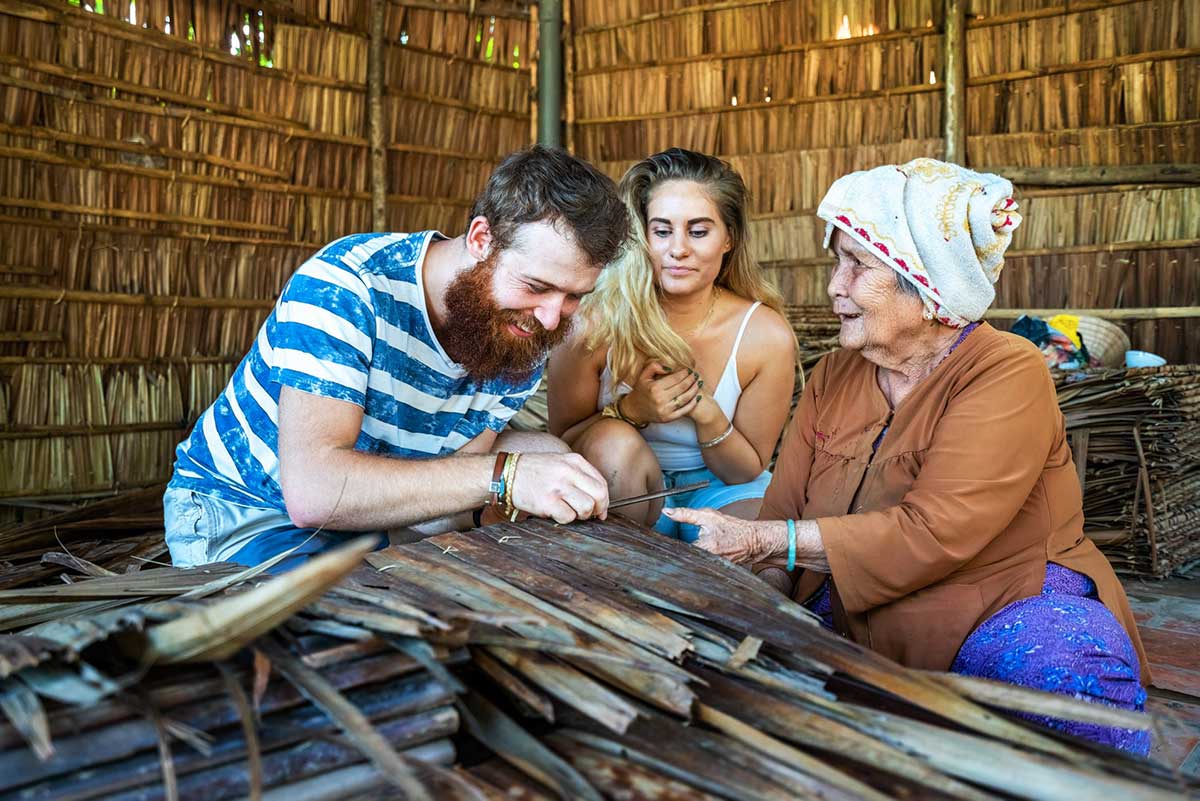
One of the most engaging things to do in the Mekong Delta is joining activities with locals. Cooking classes are popular, but you can also learn how to fish with traditional nets, make rice paper or coconut candy, or even try chocolate making in Ben Tre. These workshops are simple but memorable ways to connect with the culture.
Sights in the Mekong Delta: Where to go & Stay
The Mekong Delta is a vast region, and it can be overwhelming to plan a trip by just looking at long lists of attractions. Instead of mixing up all the things to do in the Mekong Delta, we’ve broken the region down into areas. This makes it easier to decide where to go or where to stay in the Mekong Delta, depending on which experiences appeal to you most.
Until recently, the Delta consisted of more than ten provinces. In 2025, Vietnam merged and reorganized them, leaving six larger provinces. For clarity, the list below follows this new system. If you want to see how the old provinces looked on a map, check out our dedicated Mekong Delta Map guide, which also explains the historical divisions.
1. Tay Ninh (including Long An)
Tay Ninh itself was not originally part of the Mekong Delta, but since merging with Long An — which very much is — it now belongs to the new administrative region. Together, they offer a mix of cultural and natural sights.
Cao Dai Holy See (Tay Ninh)
The Cao Dai Holy See is the main temple of the Cao Dai faith, built in a striking mix of Eastern and Western styles. Inside, colorful murals, dragon pillars, and daily ceremonies make it one of the most unusual religious sites in Vietnam.
Ba Den Mountain cable car and summit
Ba Den Mountain is the highest peak in southern Vietnam and a major pilgrimage site. A modern cable car takes you past forests and temples to the summit, where wide views stretch across the plains.
Tan Lap Floating Village (Long An wetlands)
Tan Lap Floating Village is a wetland area with long wooden walkways through lotus ponds and cajeput forests. Boat rides through the flooded landscape make it a peaceful nature stop near Ho Chi Minh City.
Lang Sen Wetland Reserve
Lang Sen Wetland Reserve protects a mosaic of lotus swamps, grasslands, and bird habitats. It is less visited than other reserves, making it an option for travelers who want a quieter nature experience.
2. Can Tho (including Sóc Trăng & Hau Giang)
Can Tho is both a province and the largest city in the Mekong Delta, making it a natural hub for travel. Many of the best things to do in the Mekong Delta can be found here, from floating markets and canal boat rides to orchard visits. With Sóc Trăng and Hau Giang now part of the same administrative area, this region also highlights Khmer culture and unique wetlands, which is why it’s one of the most popular places to stay.
Can Tho City (Can Tho)
Can Tho City is the commercial and cultural center of the Delta, with Ninh Kieu Wharf as its lively riverside heart. The city also has night markets, small museums, and historic pagodas that make it more than just a jumping-off point for boat tours.
Cai Rang Floating Market (Can Tho)
Cai Rang Floating Market is the best-known in Vietnam, with traders selling produce from wooden boats at dawn. It is smaller and more tourist-oriented than in the past, but still offers a glimpse of river life, and for many remains the best thing to do in the Mekong Delta.
Som Rong Pagoda and reclining Buddha (Soc Trang)
Som Rong Pagoda is a Khmer Buddhist temple best known for its reclining Buddha statue, over 60 meters long. The modern structure stands out against traditional pagoda buildings and has become a cultural symbol of Sóc Trăng.
Bat Pagoda (Soc Trang)
Bat Pagoda is a centuries-old Khmer temple famous for the thousands of fruit bats that roost in its trees. The combination of ornate religious buildings and the spectacle of wildlife overhead makes it one of the most unusual sights in the area.
Lung Ngoc Hoang Nature Reserve (Hau Giang)
Lung Ngoc Hoang Nature Reserve is a large swamp forest with canals, lakes, and a wide range of bird species. Visits often include boat rides, and while facilities are basic, the landscapes are among the most untouched in the Delta.
The Real Mekong Delta Homestay Experience & Floating Markets Tour
- Experience Homestay in Can Tho with cycling through villages and rice fields.
- Highlights Cai Rang & Phong Dien floating markets with early-morning boat trip.
3. Vinh Long (including Ben Tre and Tra Vinh)
Leafy provinces west and south of the Tiền River—Vinh Long, Ben Tre, and Tra Vinh—show the Delta at its most approachable: orchards, coconut groves, back-canal life, and Khmer culture. Many of the best things to do in the Mekong Delta (slow boat rides, cycling, homestays) are easy to arrange here, and choosing a base in this area keeps transfers short.
An Binh Islet (Vinh Long)
An Binh Islet is a green river island opposite Vinh Long City, known for orchard homestays and shaded lanes. Staying here means quiet canals, short boat hops, and easy cycling between gardens.
Ben Tre (Ben Tre Province)
Ben Tre is a coconut province with palm-tunnel canals, friendly villages, and mellow boat routes. It’s popular yet not overrun, and still feels authentic if you venture beyond standard day-trip circuits.
Vam Ho Bird Sanctuary (Ben Tre)
Vam Ho Bird Sanctuary protects mangroves where storks and herons gather in large numbers. Late afternoon is best, when flocks return to roost and the trails and watchtowers come alive.
Mang Thit Brick Kilns (Vinh Long)
Mang Thit Brick Kilns are clusters of round, red-brick furnaces along the Cổ Chiên River—photogenic reminders of a fading craft. A short boat ride lets you see kilns, drying yards, and small workshops up close.
Ang Pagoda (Tra Vinh)
Ang Pagoda is a Khmer temple beside Ba Om Pond, with carved gables, guardian statues, and a quiet, leafy setting. Visit in late afternoon for soft light and a calm atmosphere.
Deeper in the Mekong Delta Day Tour (Ben Tre)
- Experience Boat trip, Xe Loi ride, and cycling through Ben Tre’s coconut groves.
- Highlights Coconut workshop, mat weaving, and local fruit tastings.
4. Dong Thap (including Tien Giang)
This pairing balances Dong Thap’s lotus wetlands and bird-rich reserves with Tien Giang’s easy access from Ho Chi Minh City. Choose the first for nature and quieter towns, the second for simple day trips and classic first-time routes.
My Tho (Tien Giang)
My Tho is the main launch point for short river tours to the Four Islands, with simple boat rides and orchard stops. The snake farm is sometimes included but not recommended; focus instead on early starts and quieter canals.
Tram Chim National Park (Dong Thap)
Tram Chim National Park is a seasonally flooded plain famous for lotus fields and, in the right months, Sarus Cranes. Small boats weave through channels and bird hides; peak wildlife viewing is typically in the dry season.
Sa Dec (Dong Thap)
Sa Dec is a low-key river town known for flower nurseries, narrow canals, and a handful of preserved French-period houses. It’s a pleasant base for slow walks, riverside cafés, and nearby garden visits.
Cai Be (Tien Giang)
Cai Be is a riverside area once known for its floating market, now small and mostly focused on visitors. It works best for canal boat rides, orchard visits, and short stops at family-run workshops.
Vinh Trang Pagoda (Tien Giang)
Vinh Trang Pagoda is an eclectic temple complex blending Vietnamese, Chinese, and Khmer elements. Expect towering Buddha statues, ornate façades, and a busy but photogenic garden.
Classic Mekong Delta Day Tour (My Tho)
- Experience: Sampan boat ride, orchard visit, and coconut candy-making in My Tho.
- Highlights: Vinh Trang Pagoda and tastings of fruit and honeybee tea.
5. Ca Mau (including Bac Lieu)
At the southern tip of Vietnam, Ca Mau is the “end of the road,” with mangrove forests and the symbolic cape where the Mekong meets the sea. Nearby Bac Lieu adds wind farms, bird sanctuaries, and Khmer temples to the mix.
Mui Ca Mau / Cape Ca Mau
Mui Ca Mau is the southernmost point of Vietnam, marked by a monument where rivers and sea meet. It’s a symbolic destination rather than a scenic one, but standing there feels like reaching the end of the country.
U Minh Ha National Park (Ca Mau)
U Minh Ha National Park is a vast peat swamp forest with canals, birdlife, and traditional beekeeping. Boat rides and observation towers give visitors a good overview of this unique ecosystem.
Bac Lieu Wind Farm
The Bac Lieu Wind Farm features rows of giant turbines rising from the sea, an unusual sight in the Delta. It has become a popular photography stop, especially at sunrise or sunset.
Bac Lieu Bird Sanctuary
Bac Lieu Bird Sanctuary is a wetland reserve where thousands of storks and herons nest in tall trees. Wooden walkways and viewing towers make it one of the more accessible bird sites in the region.
6. An Giang (including Kien Giang)
An Giang is a border region and one of the most diverse parts of the Delta: Khmer and Cham communities, mountain landscapes, forest reserves, and access to Cambodia. Kien Giang also includes Phu Quoc Island and the coastal town of Ha Tien, adding beaches and island escapes to the cultural mix.
Phu Quoc Island (Kien Giang)
Phu Quoc Island is Vietnam’s largest island, known for beaches, snorkeling, and seafood. It’s far more developed than the mainland, but remains the easiest island extension to a Delta trip.
Chau Doc (An Giang)
Chau Doc is a lively river town with floating houses, Cham villages, and colorful markets. It’s also a common stop for travelers heading by boat across the border to Phnom Penh.
Tra Su Cajeput Forest (An Giang)
Tra Su Cajeput Forest is a flooded woodland with narrow canals shaded by tall cajeput trees. Boat rides here are especially beautiful in the wet season, when green duckweed carpets the water.
Sam Mountain (An Giang)
Sam Mountain rises above the flat Delta, dotted with pagodas and shrines. From the summit you get wide views across the rice fields and into Cambodia.
Ta Pa (An Giang)
Ta Pa is a scenic area with rice fields, a small lake, and a hilltop temple. The combination of landscape and Khmer architecture makes it a favorite spot for local photographers.
Ha Tien coastal caves and beaches (Kien Giang)
Ha Tien is a relaxed border town with limestone caves, quiet beaches, and ferry connections to Phu Quoc. It’s also the main overland crossing into Cambodia from this part of Vietnam.
Long Xuyen (An Giang)
Long Xuyen is a commercial hub with a modest floating market that is less lively than in the past. The city itself has few major sights, but it’s a good base for exploring nearby craft villages and rural scenery.
Conclusion: Where to go in the Mekong Delta & Where to Stay
With so many options, it’s not always easy to decide where to go in the Mekong Delta or where to stay in the Mekong Delta. A short day trip from Ho Chi Minh City is very different from a two- or three-night journey deeper into the region. To make it clearer, we’ve split the recommendations: first for one-day visits, and then for multi-day stays.
If you want balance—enough accommodation choices, activities, and easy travel connections—stick to the more established hubs. But if you are adventurous or don’t mind basic services, the wider list of sights above also helps you spot the areas that are less developed or harder to reach.
Best place to go in a 1-day trip
Most of the Delta is too far for a proper one-day return from Ho Chi Minh City. That said, a couple of destinations are within reach if you only have limited time.
- Ben Tre – Often recommended for day trips because of its coconut groves and shaded canals. Boat tours and cycling are pleasant here, but be aware that tours can feel repetitive if you’ve already seen similar places in Vietnam.
- My Tho – The most popular choice for a Mekong Delta day trip thanks to its short distance from Ho Chi Minh City. Many itineraries focus on the Four Islands, which can feel curated and less authentic; some travelers enjoy the mix of boat rides, orchards, and simple activities, while others find it staged.
Best places to stay on a multi-day trip
If you have two or more days, you can go further into the Delta and actually spend a night by the river. This gives you time for early floating markets, cycling trips, and quieter countryside.
- Can Tho – The most popular overnight stop, mainly for Cai Rang Floating Market at dawn. The surrounding area also offers many of the best things to do in the Mekong Delta, such as cycling, kayaking, and visiting orchards.
- Ben Tre – Works just as well for overnight as for a day trip, especially if you choose a homestay or eco-lodge. It feels less urban than Can Tho and is a good option if you prefer peaceful canals and village life.
- Chau Doc – A completely different side of the Delta, near the Cambodian border. It’s known for Cham villages, Sam Mountain temples, and as a stop on the river route to Phnom Penh, making it appealing for travelers who want more than the classic Delta experience.
Best time to visit the Mekong Delta: weather & events
The Mekong Delta can be visited year-round, but the time of year can affect your experience. The region is warm throughout the year, with a distinct dry season and rainy season. For a complete month-by-month breakdown of weather, see our dedicated guide to the best time to visit the Mekong Delta.
Dry season (December – April)
This is the most comfortable period, with lower rainfall and plenty of sunshine. It’s a good time for cycling, boat trips, and exploring rural areas without too much mud or flooding.
Rainy season (May – November)
Rain usually falls in short but heavy bursts, often in the afternoon. The landscapes are lush and green, and water levels are higher, making canal and forest boat rides more scenic.
Local events
The Delta is home to Vietnamese, Khmer, and Cham communities, each with their own festivals. These events are lively but mostly local in character, and stumbling upon one can add something special to your trip.
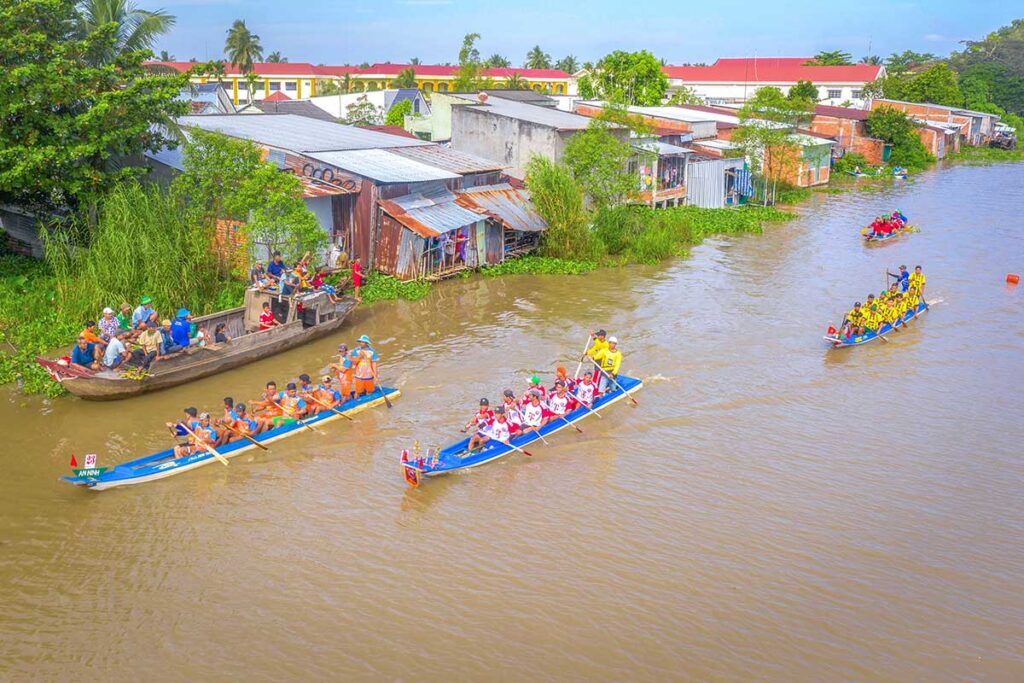
Ok Om Bok Festival (Khmer) – Celebrated in October or November with moon worship ceremonies and colorful boat races.
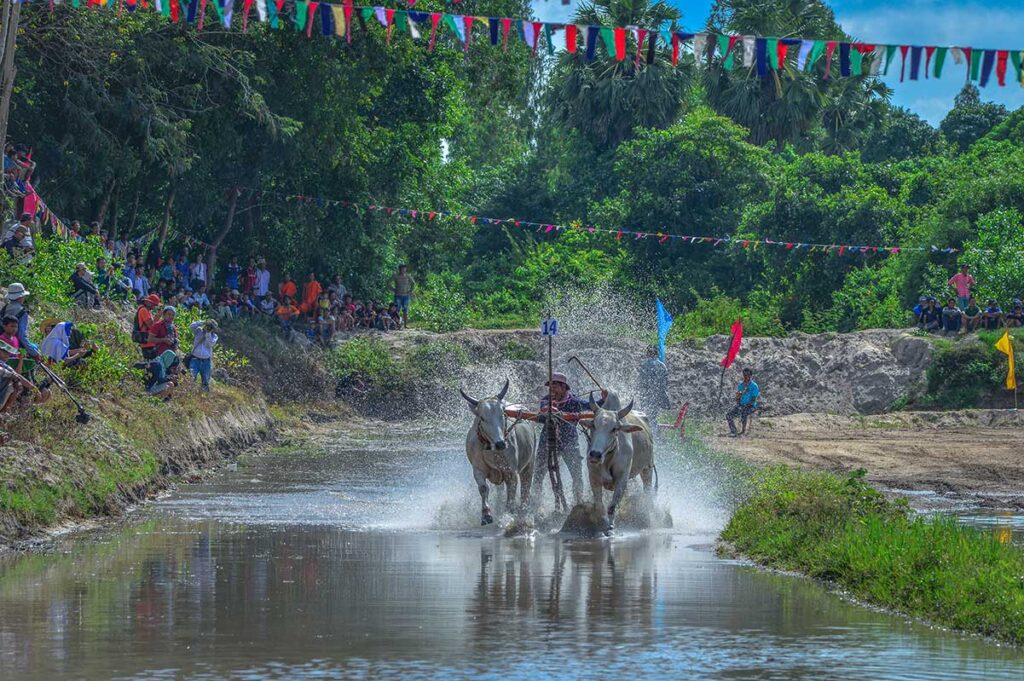
Bay Nui Ox Racing Festival (An Giang) – A Khmer event in September or October where pairs of oxen race through muddy fields.
Nghinh Ong Whale Festival (coastal areas) – A traditional fishermen’s festival with processions, offerings, and performances.
Chau Doc Ba Chua Xu Festival (An Giang) – A major pilgrimage each spring (April–May) at the temple on Sam Mountain.
How to get to the Mekong Delta
Reaching the Mekong Delta is straightforward from Ho Chi Minh City, though the best option depends on your time and budget. Long-distance buses are the most common, but there are also small domestic airports and private transport options for more comfort.
Bus connections
Almost all major Delta cities can be reached directly by bus from Ho Chi Minh City. Smaller towns are harder to reach, and you’ll often need to travel to a nearby hub first and continue by taxi or motorbike.
Typical routes and travel times:
- Ho Chi Minh City – My Tho: ~2 hours
- Ho Chi Minh City – Ben Tre: ~2.5 hours
- Ho Chi Minh City – Can Tho: ~3.5–4 hours
- Ho Chi Minh City – Chau Doc: ~6–7 hours
- Ho Chi Minh City – Ca Mau: ~8–9 hours
Airports in the Mekong Delta
There are a handful of small airports in the region, but most have only a few domestic routes. Flights are short, but limited schedules mean they are not always the most practical option.
- Can Tho International Airport – Flights to Hanoi, Da Nang, Phu Quoc (~2 hours)
- Ca Mau Airport – Flights to Ho Chi Minh City (~1 hour)
- Rach Gia Airport (Kien Giang) – Flights to Phu Quoc (~30 minutes) and Ho Chi Minh City (~1 hour)
Private transportation
For those who prefer more comfort or flexibility, private transport is also possible. This can be arranged in advance through travel agencies, hotels, or car rental services.
- Renting a car with driver – The easiest option for groups or families, with door-to-door service and flexible stops along the way.
- Renting a motorbike – Only recommended if you are experienced and have plenty of time. Otherwise, it’s better to reach your destination by bus and rent a motorbike locally for short trips.
How to get around
Once you’re in the Mekong Delta, the question is how to actually visit the sights. Distances are not huge, but roads can be slow, and many attractions are best reached by boat. Here are the main ways to get around.
Taxi and Grab
Taxis and Grab cars are fine for short trips within cities, such as moving between your hotel, bus station, or restaurants. They are not ideal for longer sightseeing routes, and in smaller towns you may struggle to find one when you need it.
Rent a car with driver
If you want to cover a wider area and visit multiple attractions in a day, renting a car with a driver is the most practical option. You pay a fixed price for a full itinerary, and it always comes with a driver who knows the local roads.
Cycling
Cycling is one of the most enjoyable ways to explore small villages and quiet backroads. Many homestays provide basic bikes for free, which are fine for short rides; if you’re serious about biking, it’s better to join a cycling tour or rent a proper bicycle.
Boat tour
Seeing the Delta by boat is not only a way to get around but also one of the best things to do in the Mekong Delta. There are no real public boat services apart from a few ferries, so most boats are private rentals or part of a tour, often with a suggested route.
Cruises
Multi-day Mekong cruises combine transport with accommodation, taking you along the river between cities or even across the border to Cambodia. These cruises include sightseeing stops along the way, making the journey itself part of the experience.
Tips for traveling to the Mekong Delta
With these Mekong Delta tips, you’ll be better prepared for your trip and know what to expect once you arrive. This region is easy to visit, but it’s large, diverse, and often less tourist-oriented than other parts of Vietnam. The following travel tips about the Mekong Delta cover everything from how long to stay to what to pack, food, safety, and where to go next.
How long to visit the Mekong Delta
Day trips – A day trip is possible from Ho Chi Minh City, but you’ll only scratch the surface. Expect boat rides and orchards, but don’t expect to see floating markets—they are too far away for a same-day visit. These short tours can still be enjoyable if you know it’s more about a taste of the scenery than deep exploration.
Multi-day trips – Staying overnight gives you a completely different experience. You can catch floating markets at dawn, cycle quiet backroads, and enjoy evenings in a homestay or riverside lodge. If you want more than a quick impression, two or three days is the better choice.
What to pack for the Delta
Besides the obvious items like light clothing, sunscreen, and insect repellent, there are a few extras that help. A light rain jacket or poncho is useful in the wet season, and sandals or shoes you don’t mind getting muddy work well for boat landings and rural paths. A small daypack for cycling or boat trips is handy, and having cash in small notes makes paying in local markets much easier.
Traveling the Delta with kids
The Mekong Delta with kids is a great choice if you avoid the busiest cities. It’s peaceful, relaxed, and many activities are child-friendly. Boat rides, cycling short distances, kayaking, picking fruit, and joining simple workshops are fun for families. Some homestays and eco-lodges even have swimming pools, making it easy to balance sightseeing with downtime.
Language and communication
In larger hubs like Can Tho, My Tho, or Ben Tre, you’ll usually find some English speakers in hotels and tour companies. Once you go off the beaten track, English is less common, so translation apps or basic Vietnamese phrases are helpful. Smiles and gestures go a long way here.
Food and drinks in the Delta
The Delta has its own specialties—like hu tieu noodle soup, coconut-based dishes, and plenty of fresh fruit—but where you eat matters more than chasing specific dishes. In smaller towns, most travelers eat at their homestay or lodge, where meals are home-cooked and generous. In cities you’ll find night markets, small local restaurants, and street stalls offering a variety of choices.
Safety and health
The Mekong Delta is generally safe, but a few things are worth keeping in mind. The heat can be intense, so pace your activities and drink plenty of water. Mosquitoes are common, especially in the evenings and near wetlands—bring repellent. Tap water is not drinkable, but bottled water is cheap and available everywhere.
Accommodation types (homestays vs. hotels)
Homestays are the classic choice in the Delta, usually run by local families and often set among gardens or canals. They offer a warm, personal experience, though rooms are often basic. Hotels and lodges are available in larger towns like Can Tho or My Tho, with more comfort but less immersion in local life.
How to stay connected
Buying a local SIM card or eSIM is highly recommended if you travel independently. You’ll need it for navigating small roads, using translation apps, and staying in touch. Mobile coverage in the Delta is surprisingly good, even in rural areas, but it’s smart to download offline maps and dictionaries in case your signal drops or you run low on data.
Where to go next after the Mekong Delta
After the Delta, you can easily connect to other parts of Vietnam—or even to Cambodia.
- Ho Chi Minh City – The most obvious next step; most people return here before moving on to other destinations.
- Phu Quoc – Reachable by ferry from Ha Tien or Rach Gia, or by flight from Can Tho or Ho Chi Minh City; a good choice if you want beaches after the Delta.
- Con Dao – Small, quiet islands with beaches and history, reached by flight from Can Tho or Ho Chi Minh City.
- Hanoi – Direct flights from Can Tho connect you to the capital and northern Vietnam.
- Da Nang – Also reachable by direct flights from Can Tho, making it easy to continue to Hoi An and central Vietnam.
- Cambodia – Travel upriver by boat from Chau Doc to Phnom Penh, or cross the border by land near Ha Tien; both are straightforward routes.
